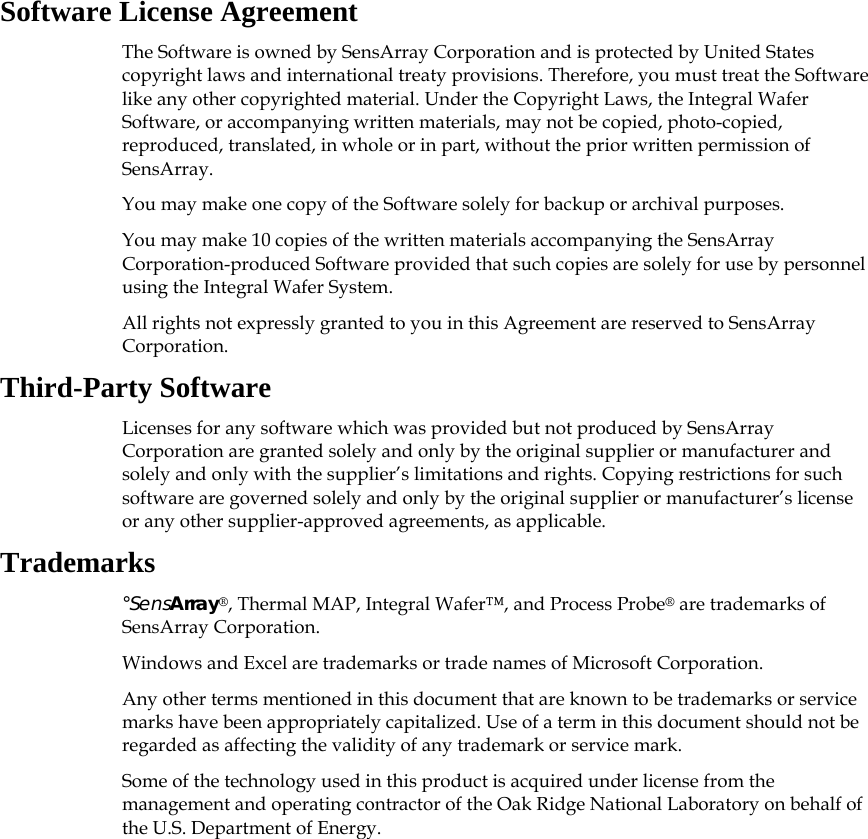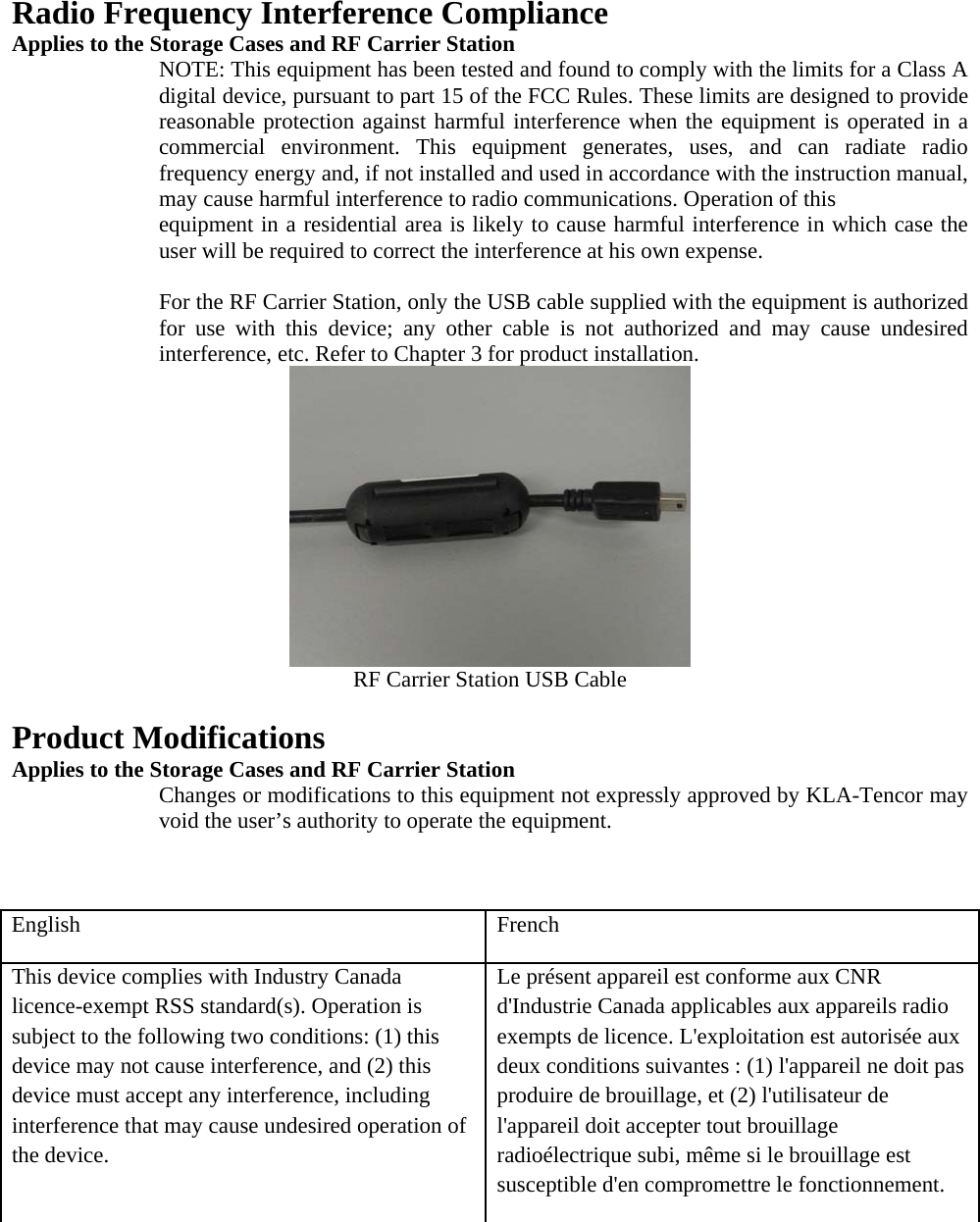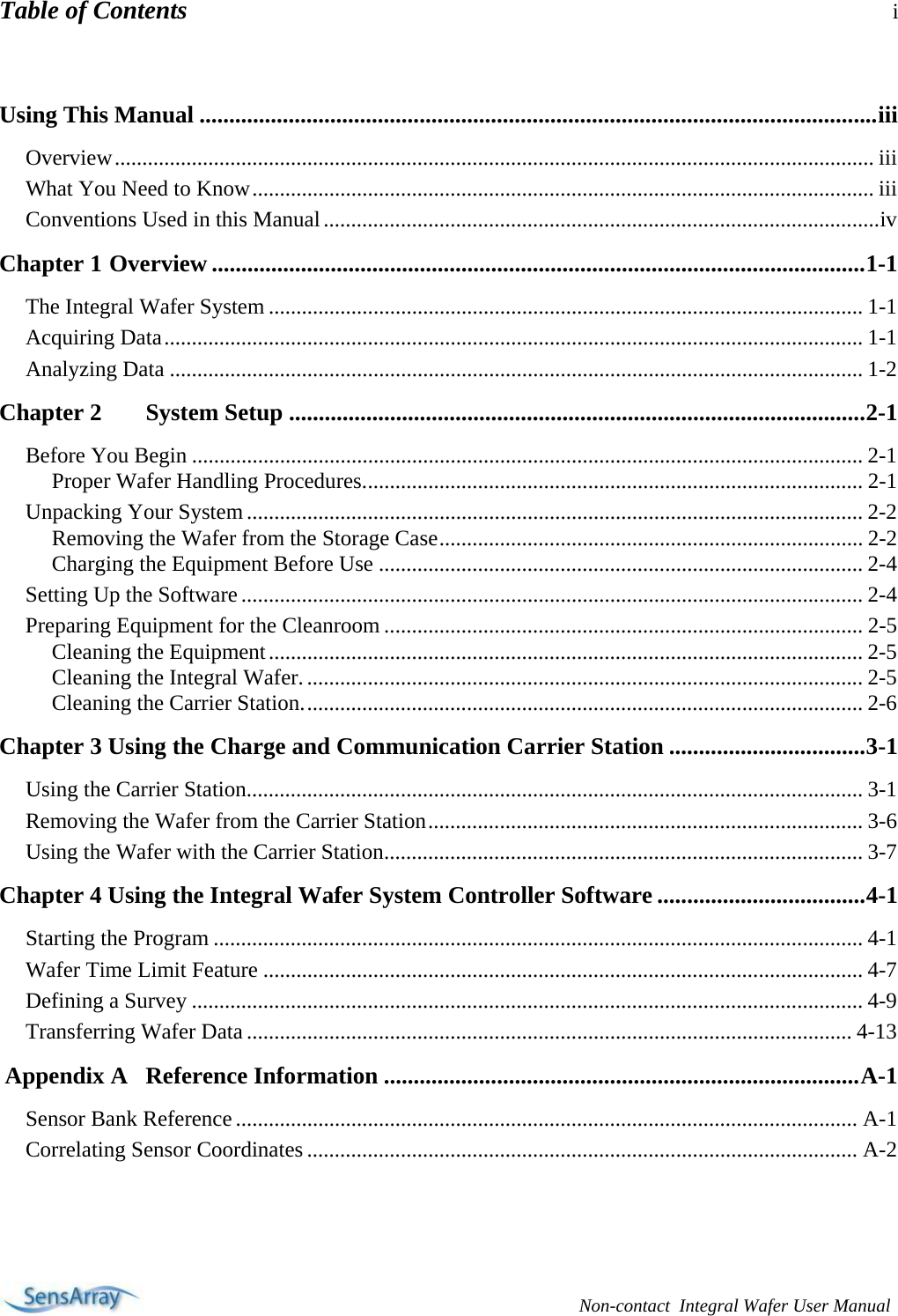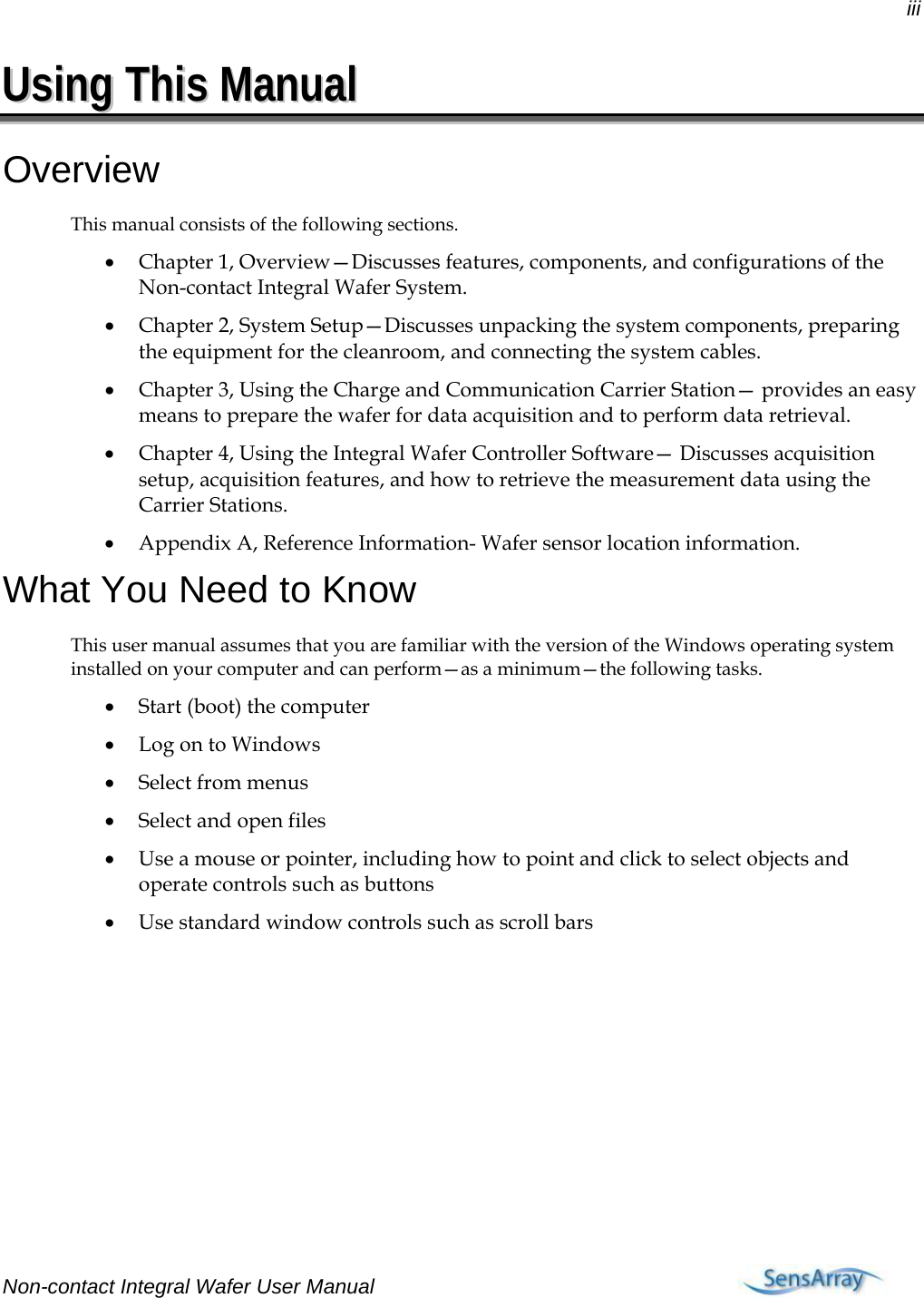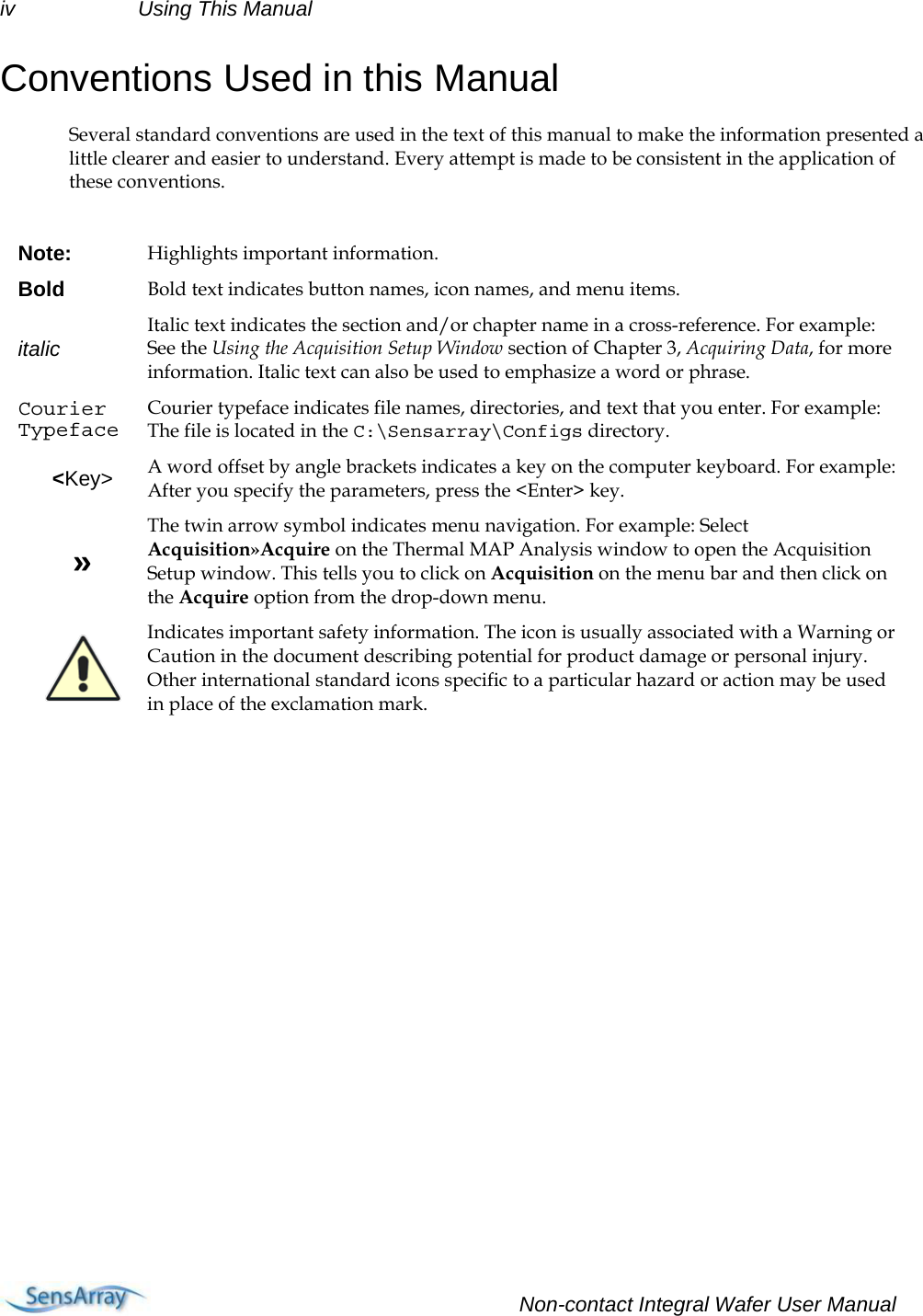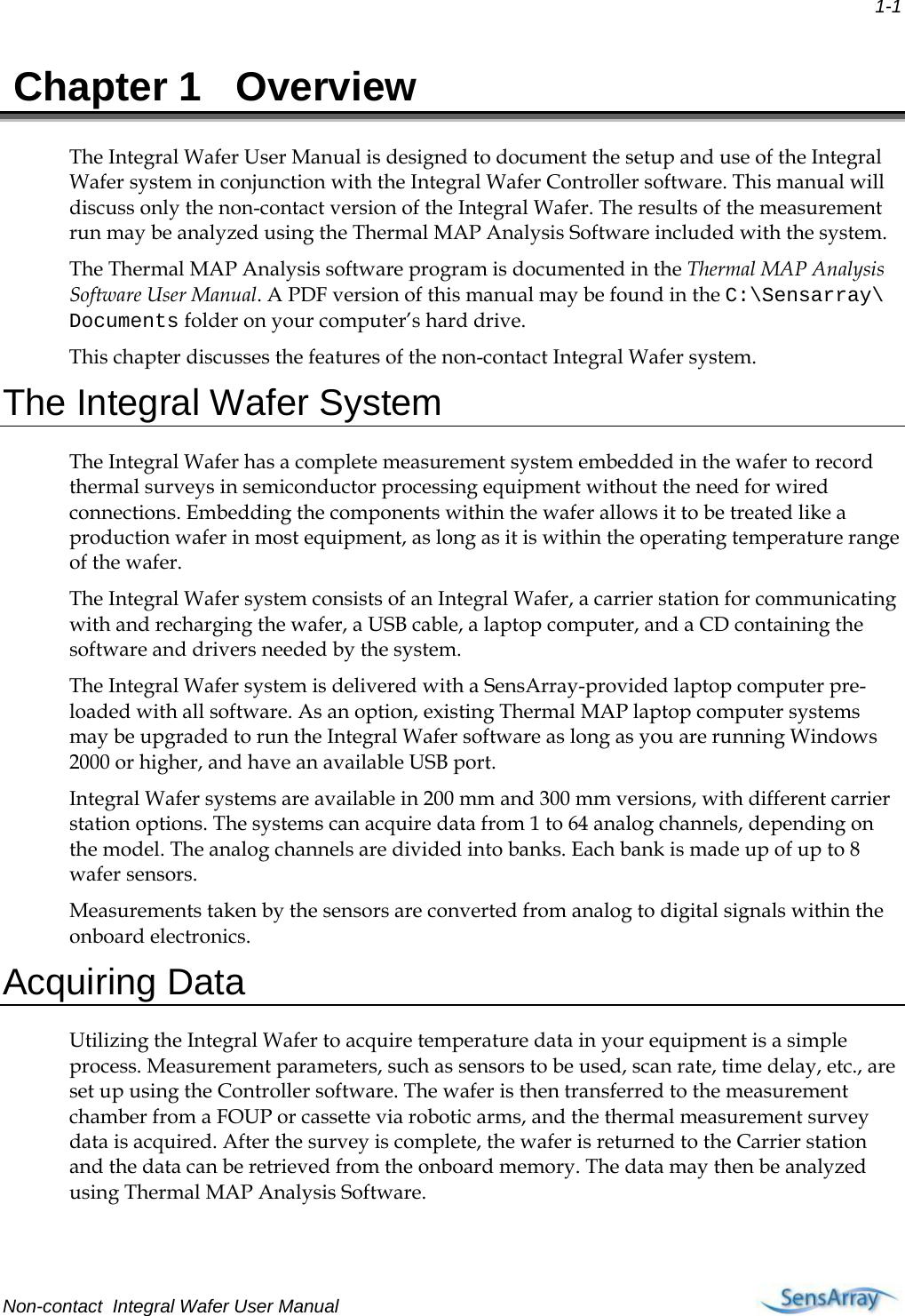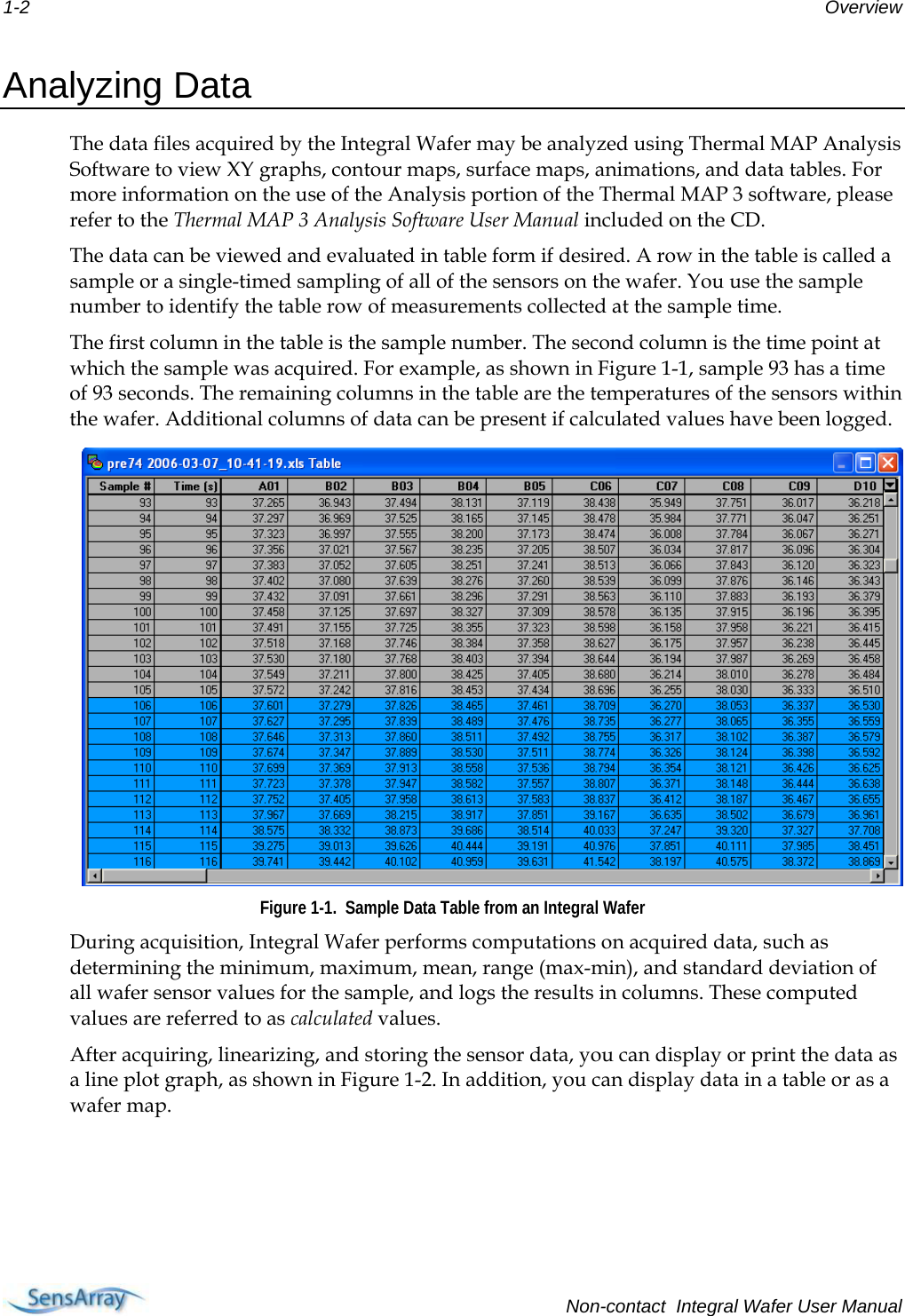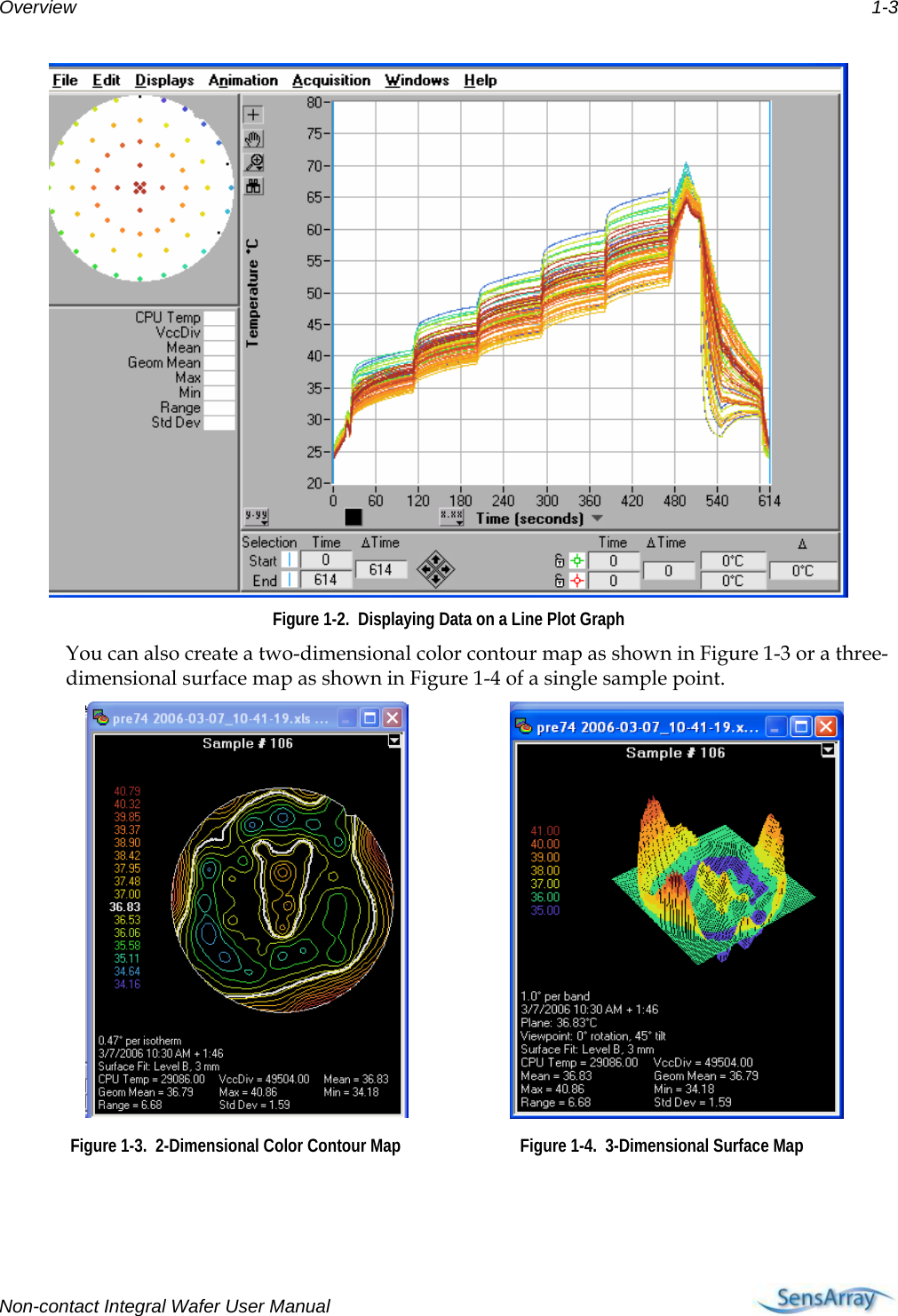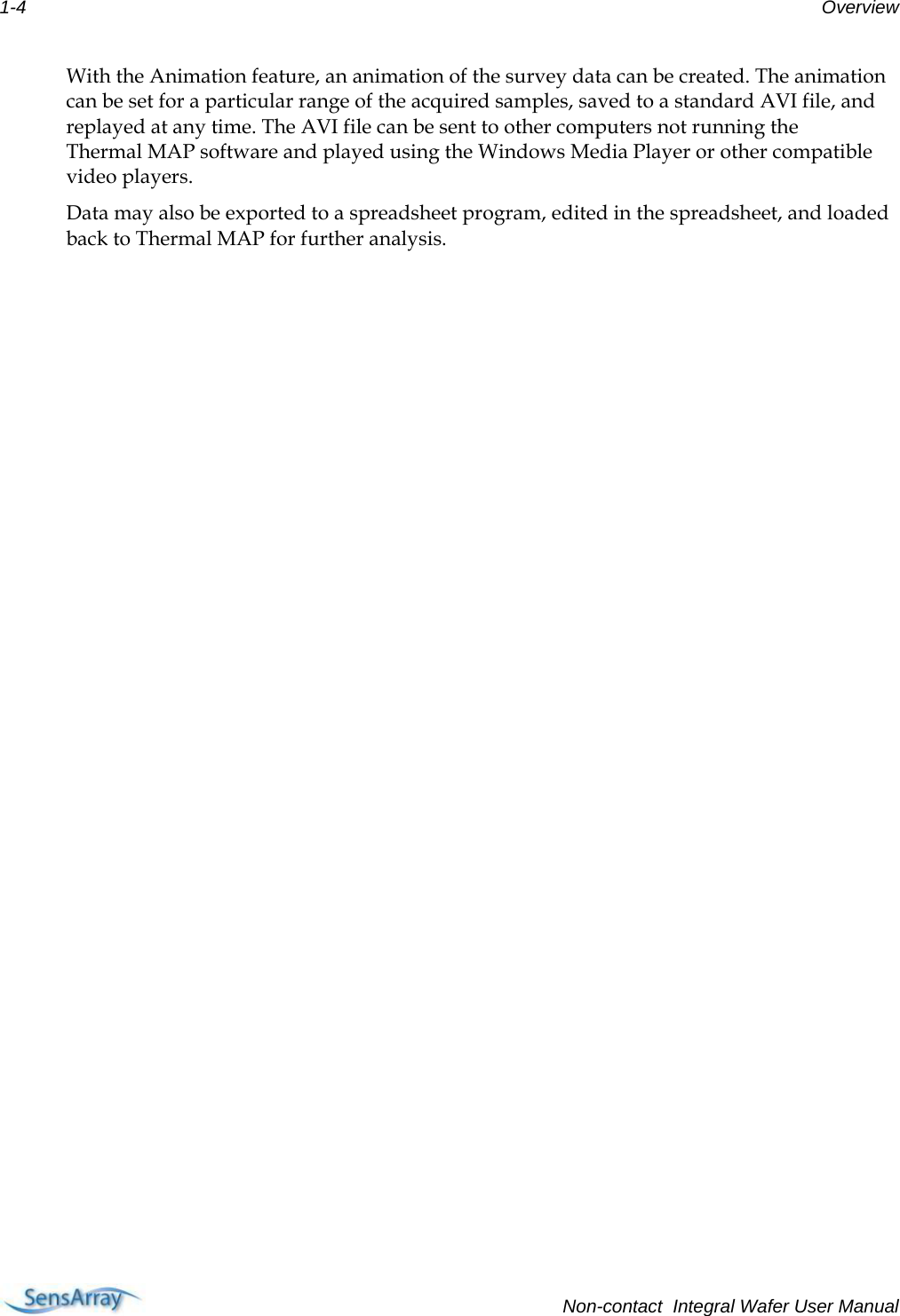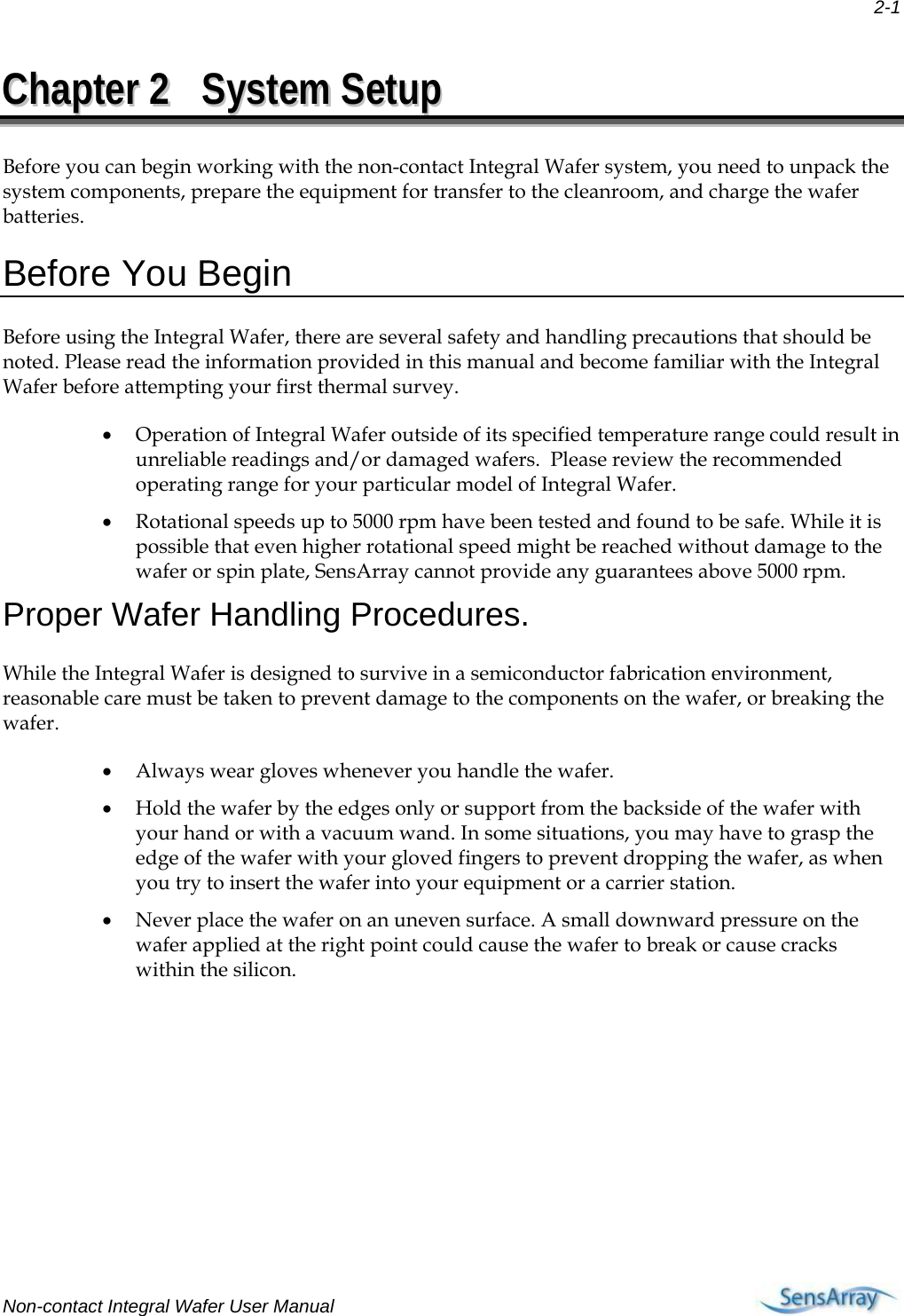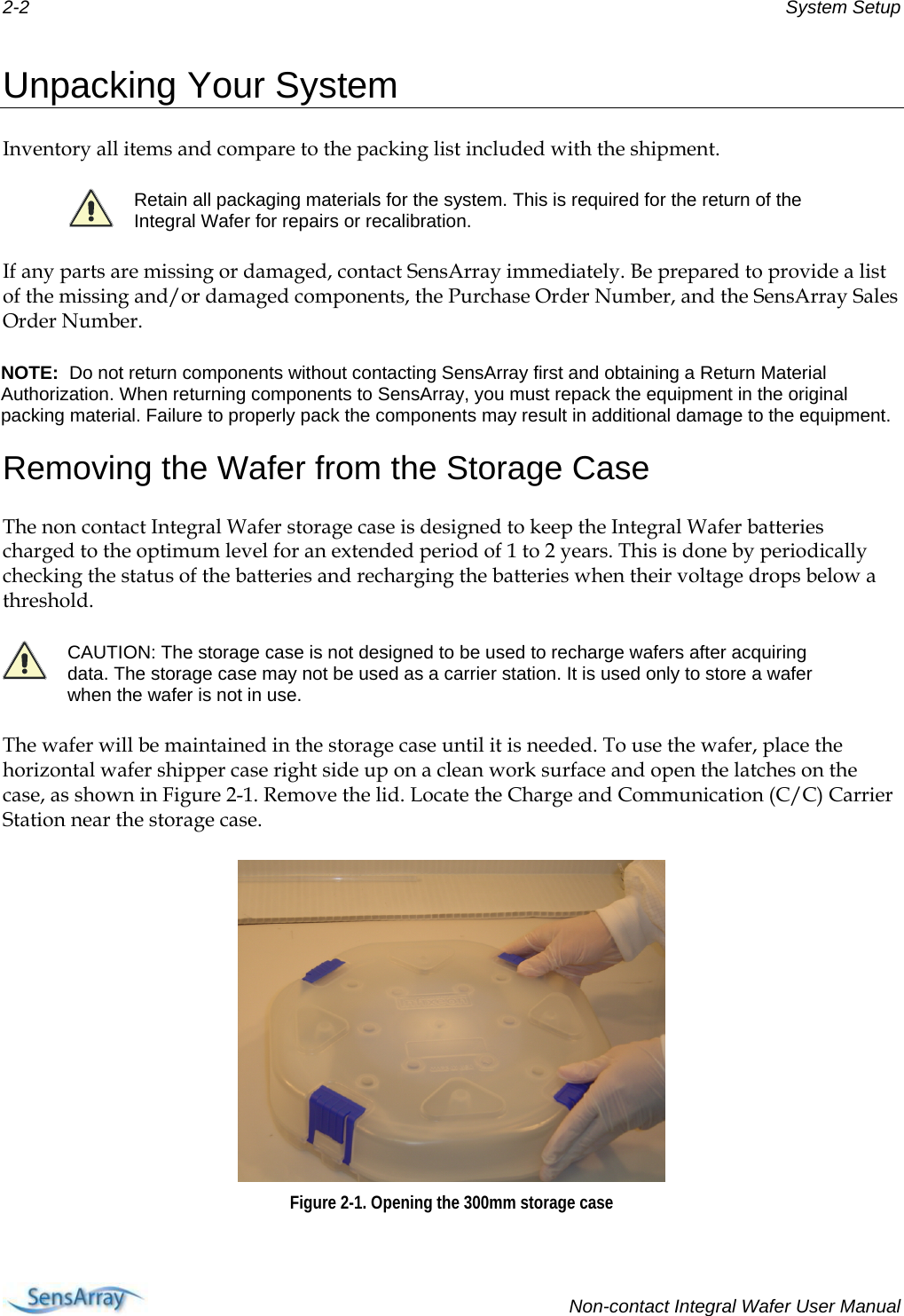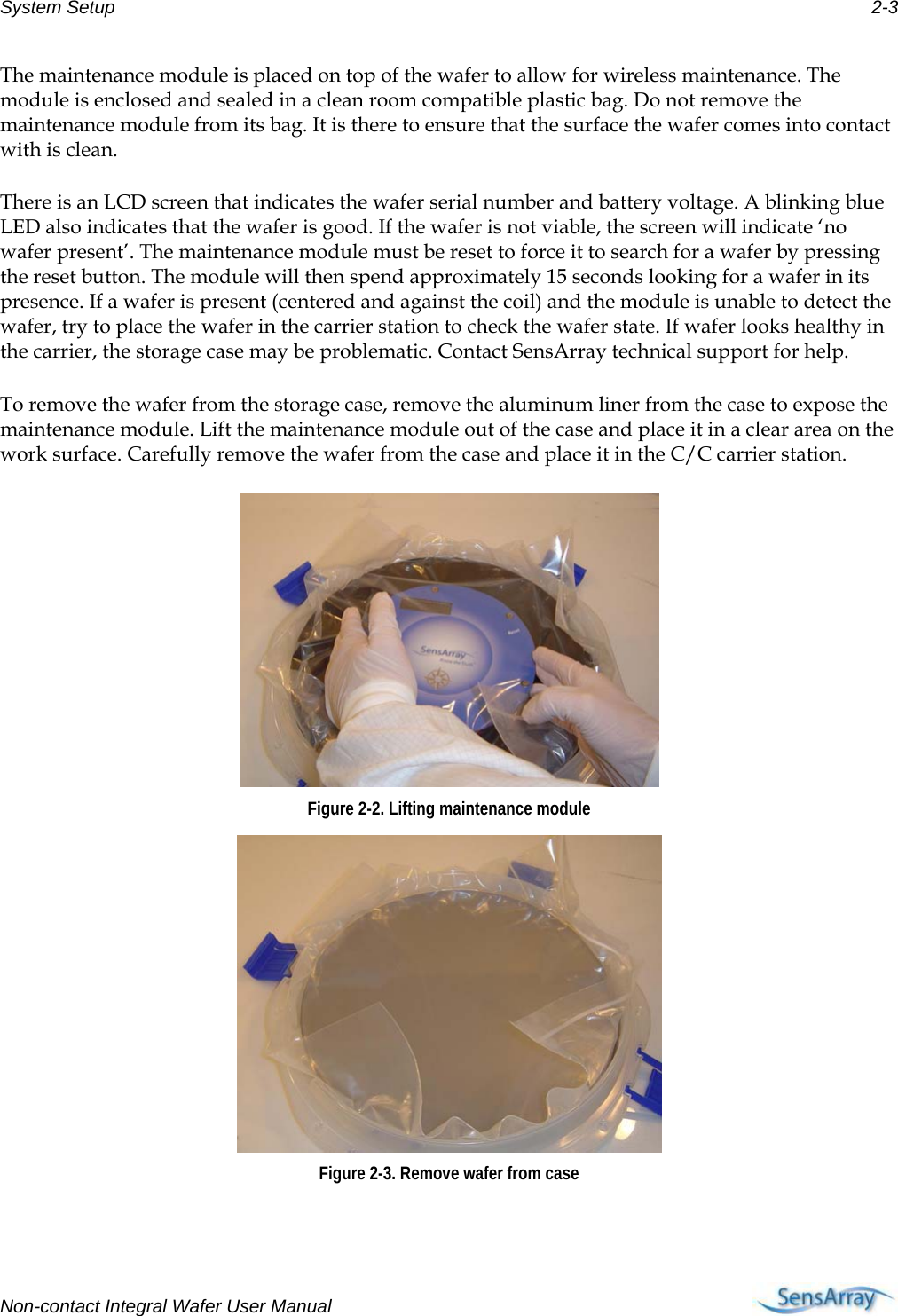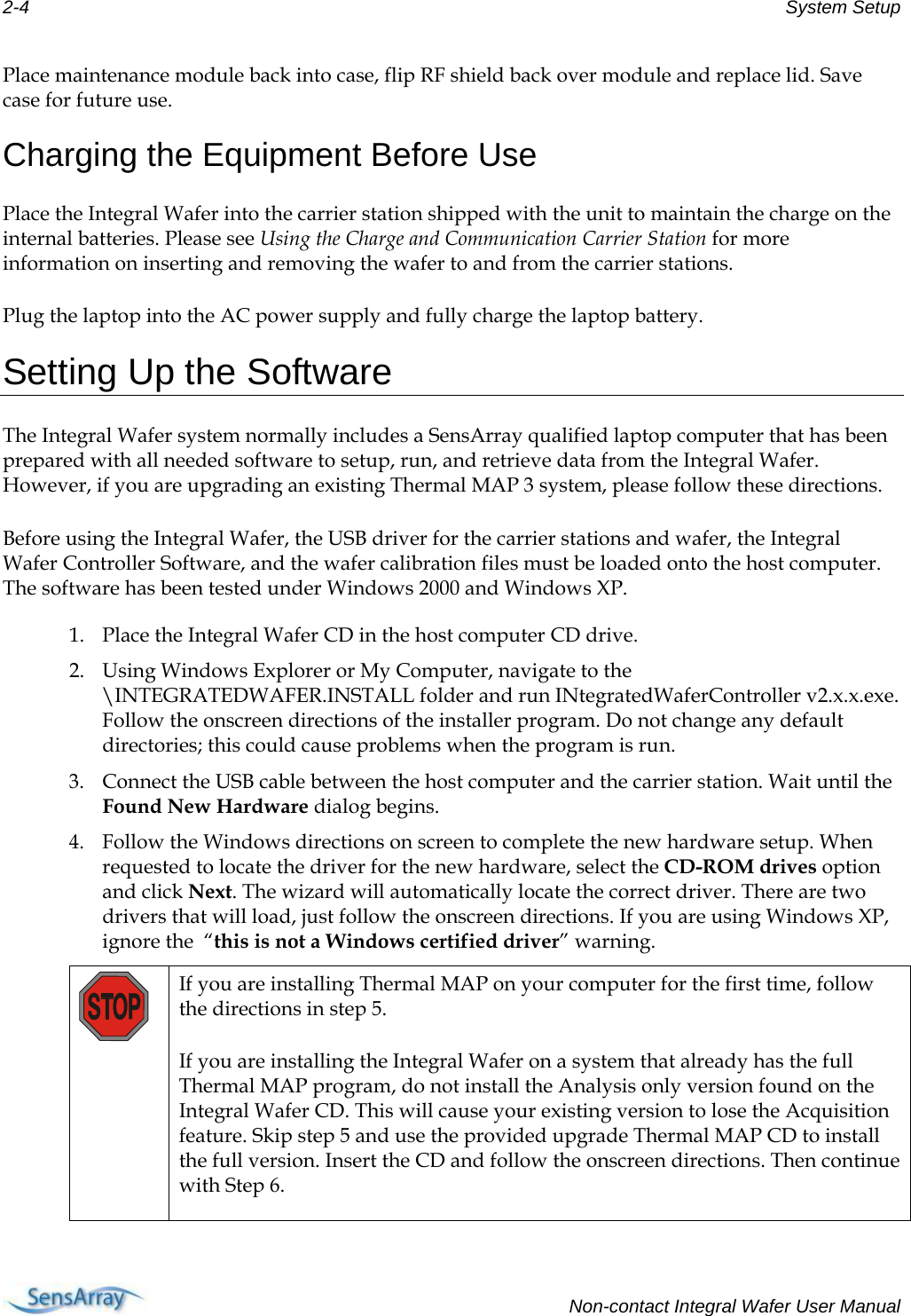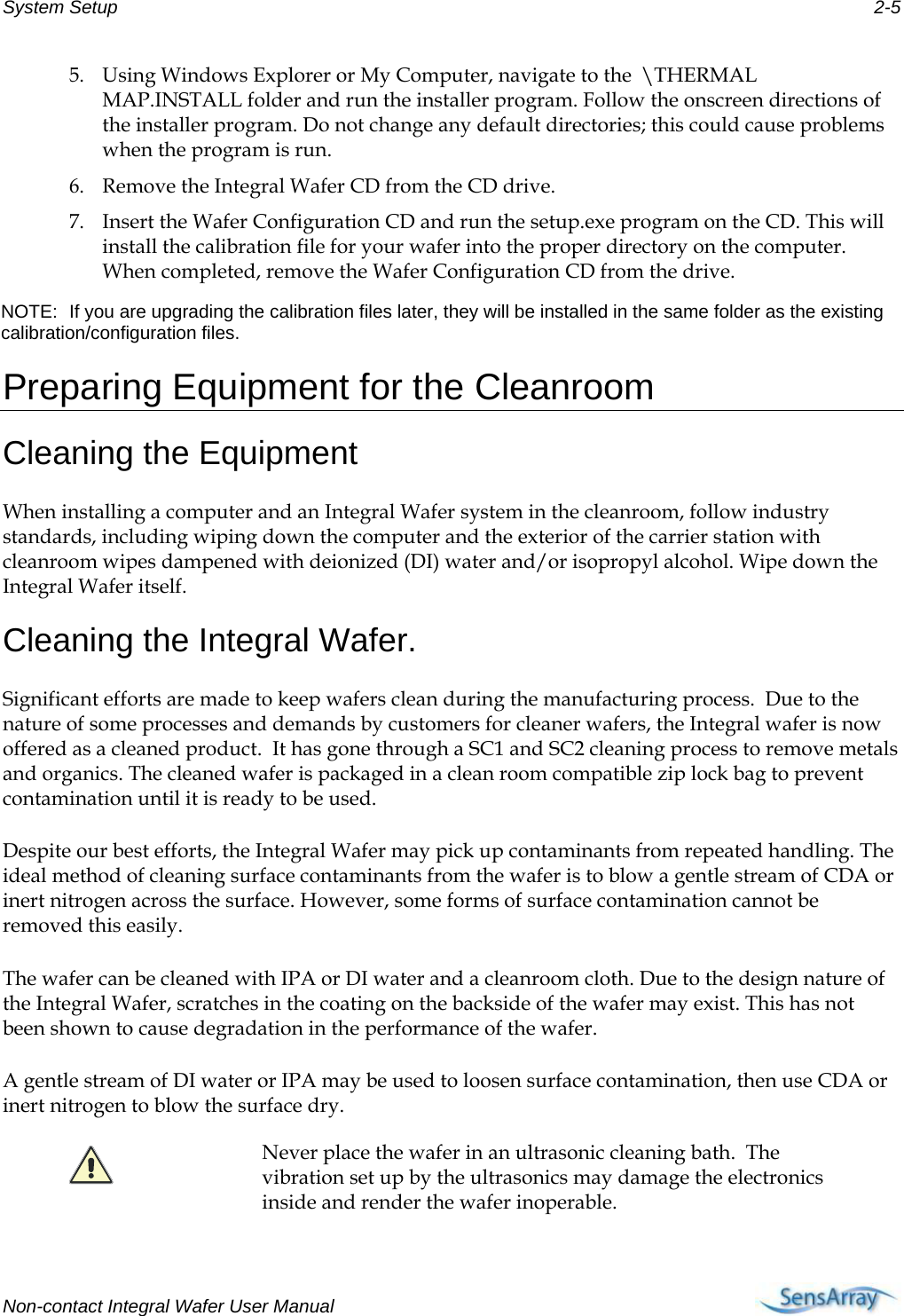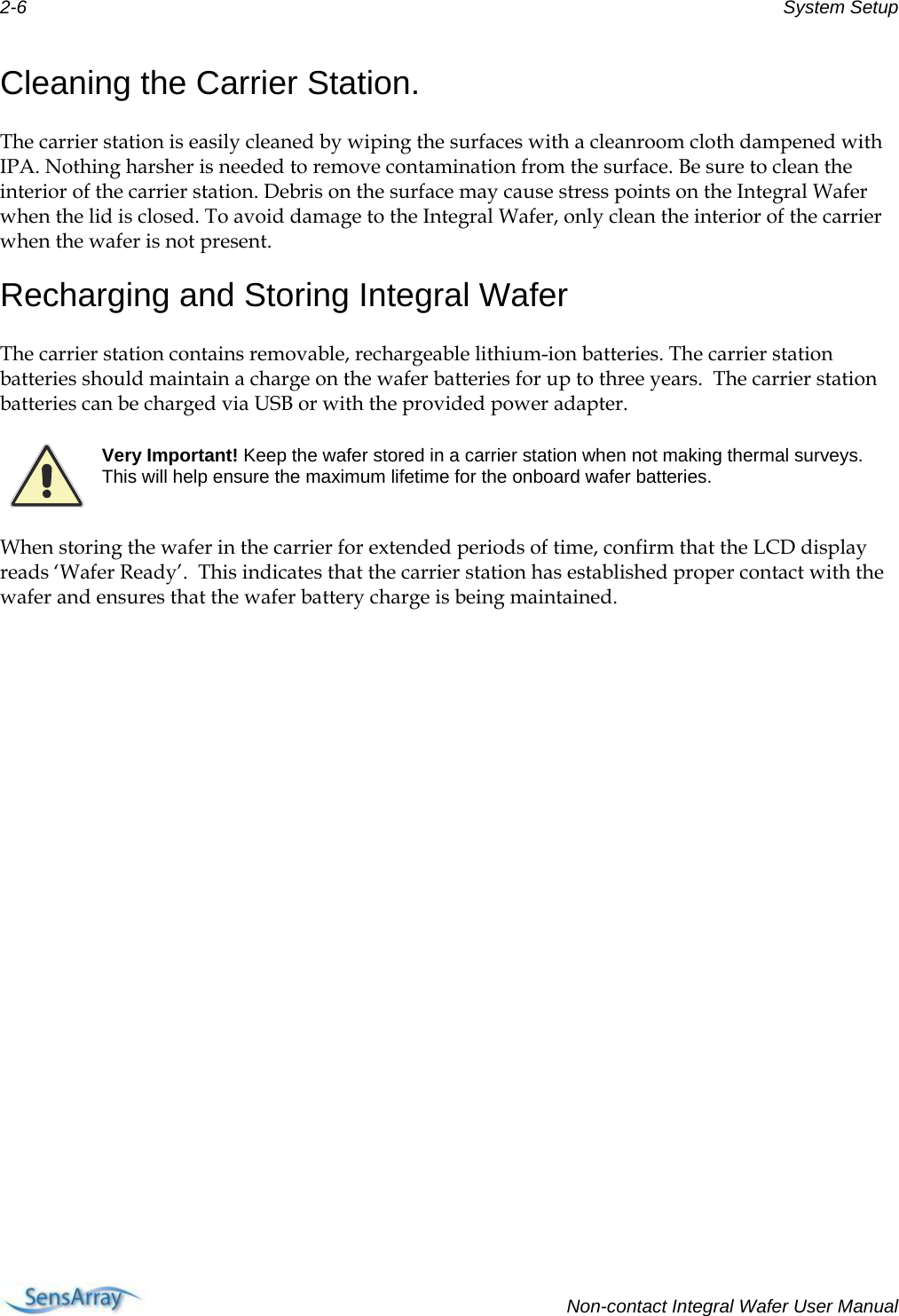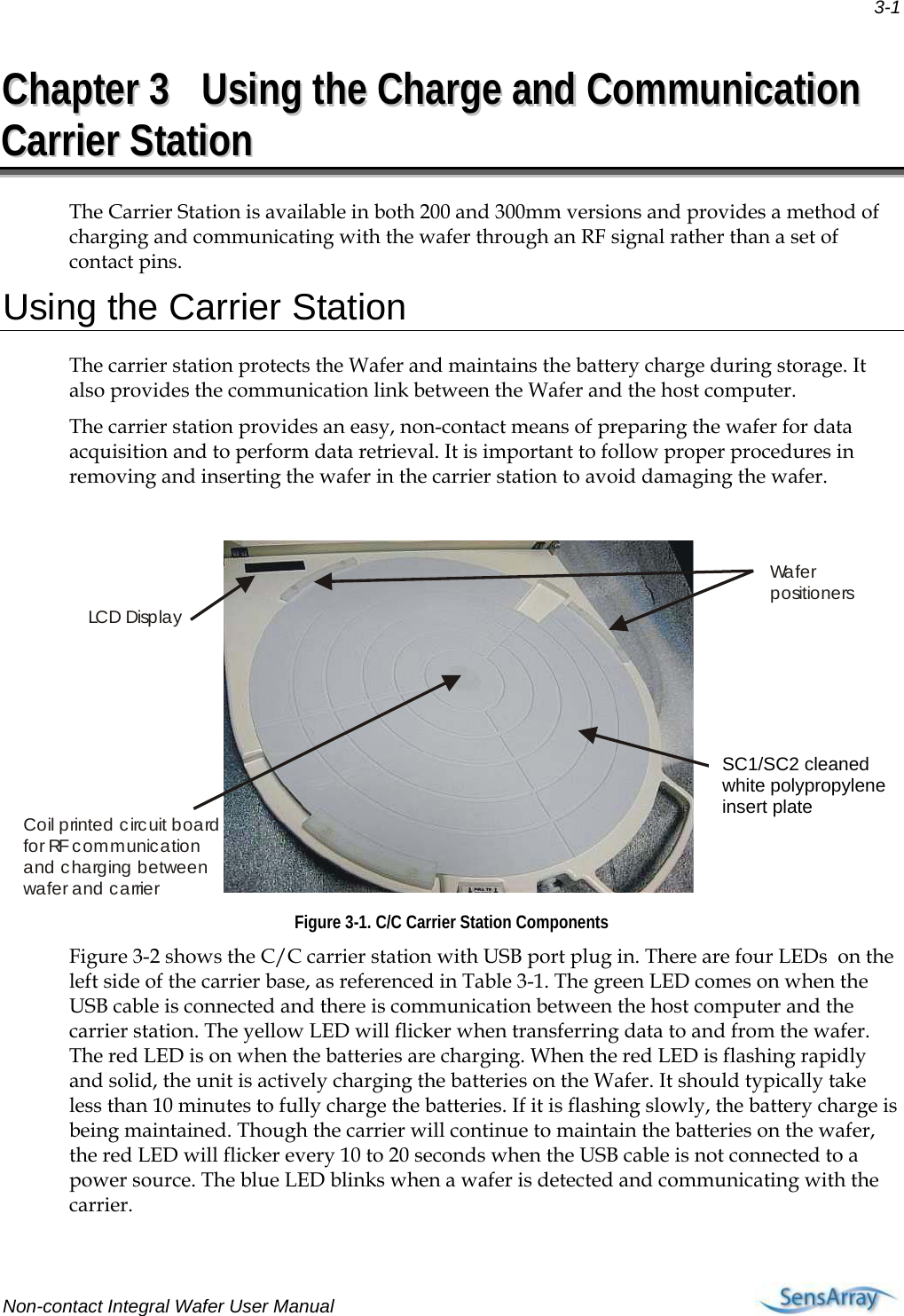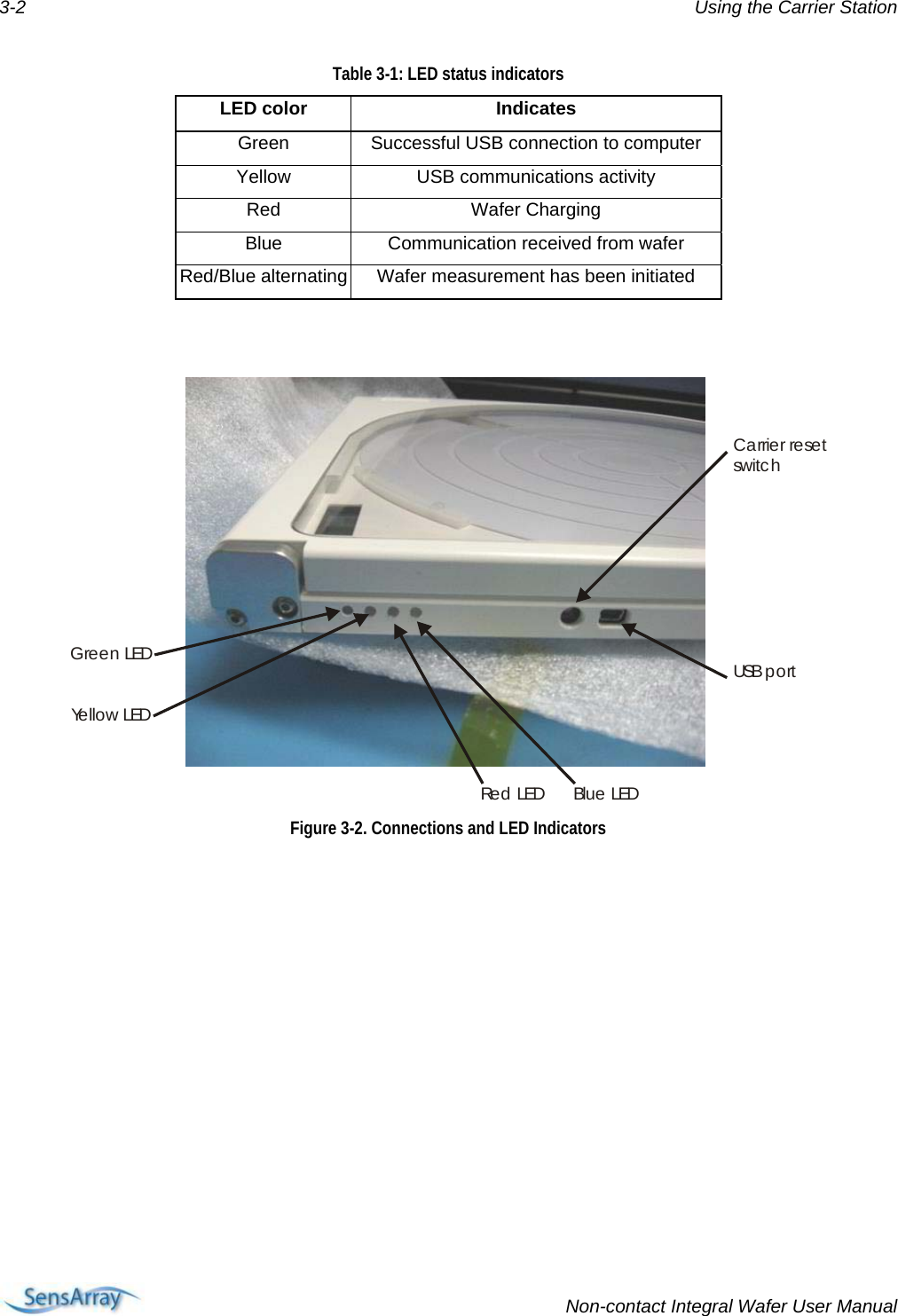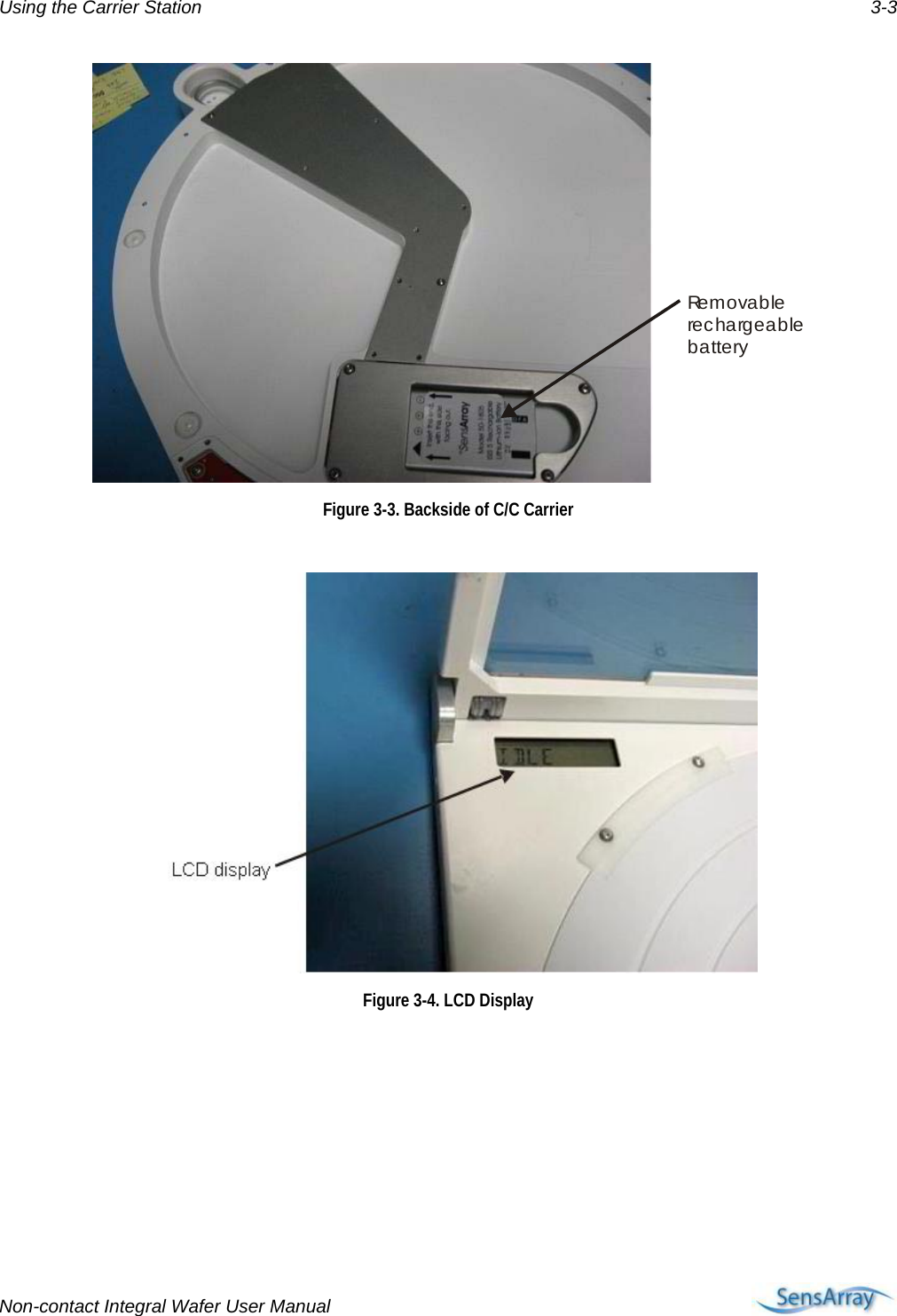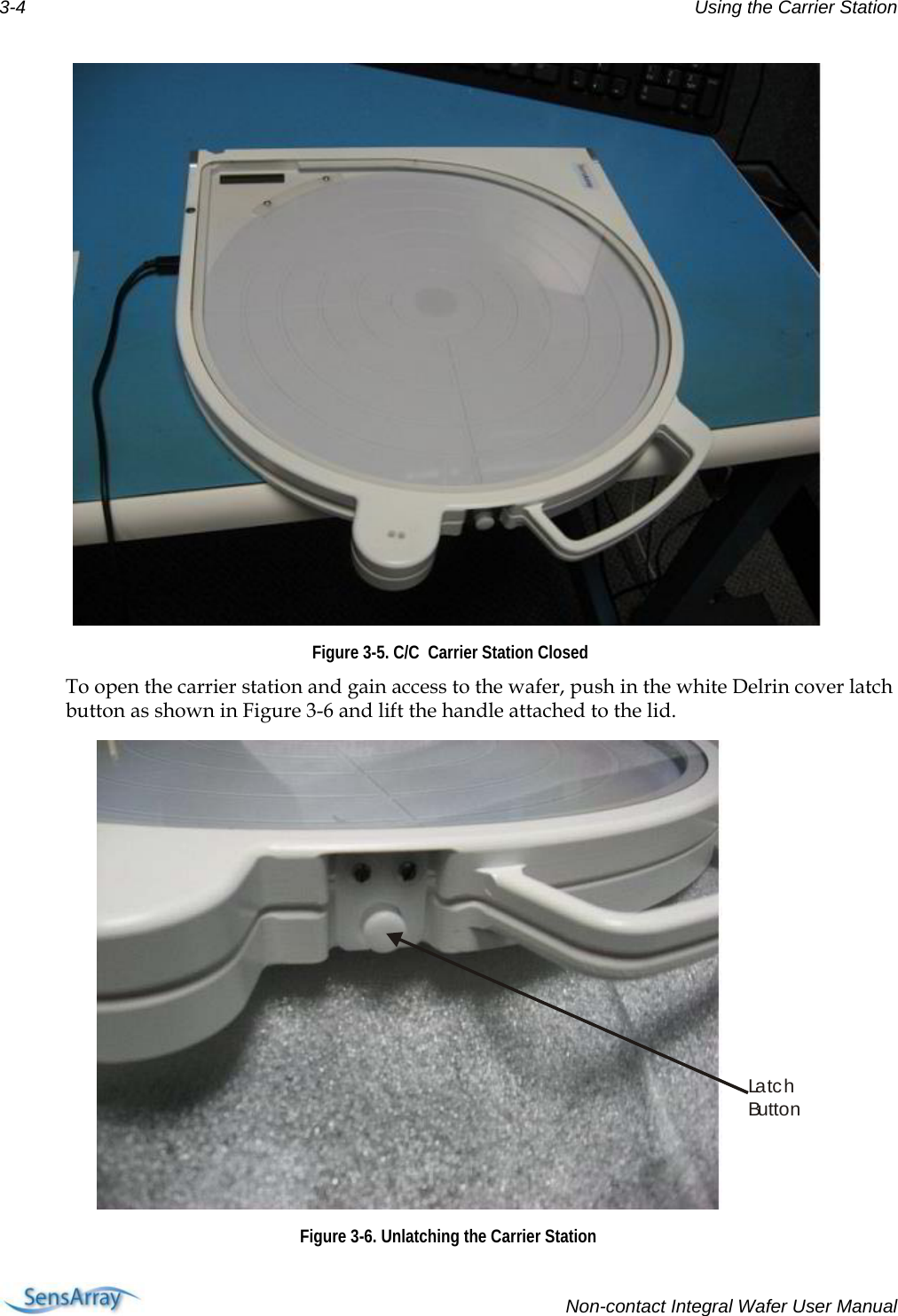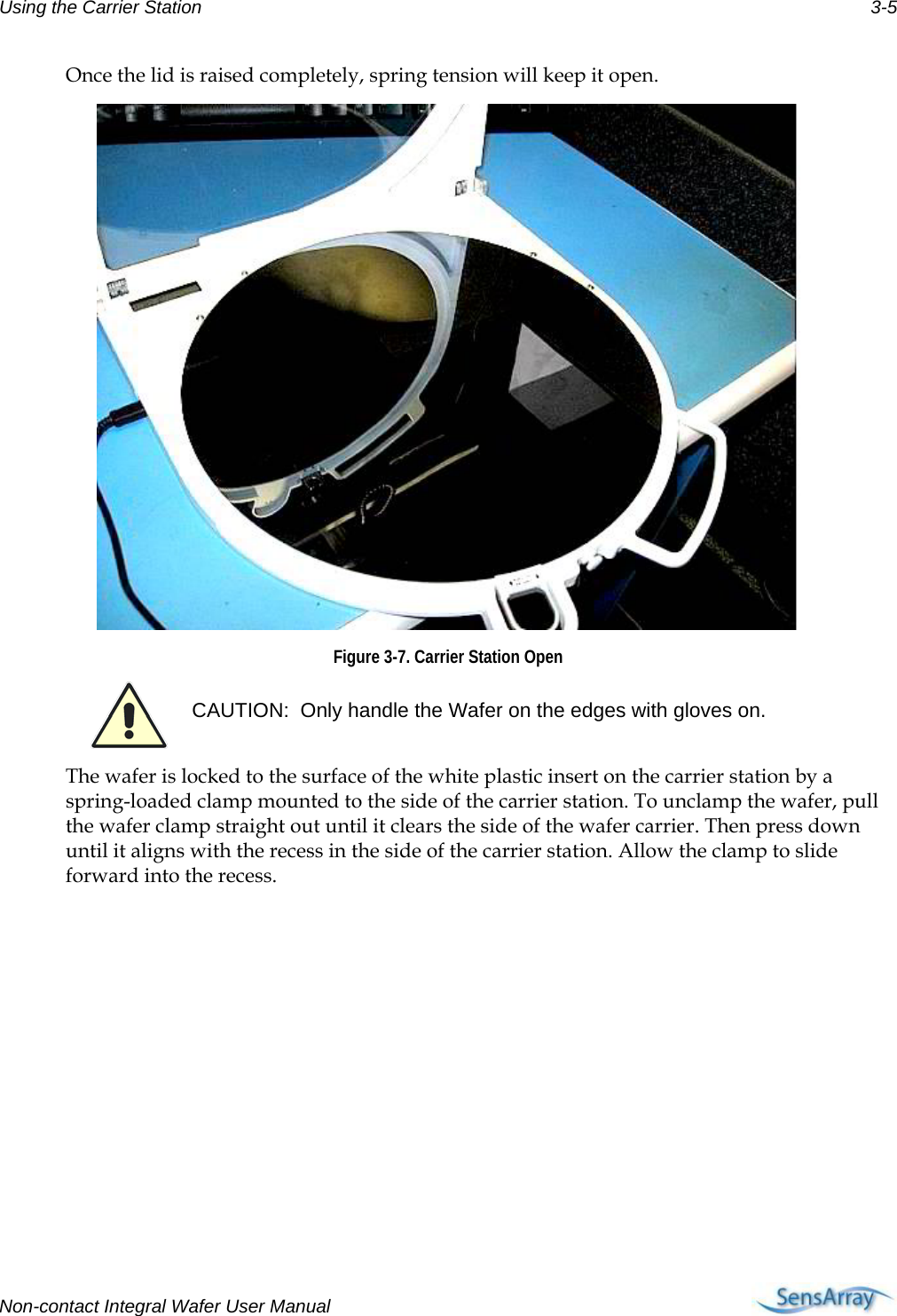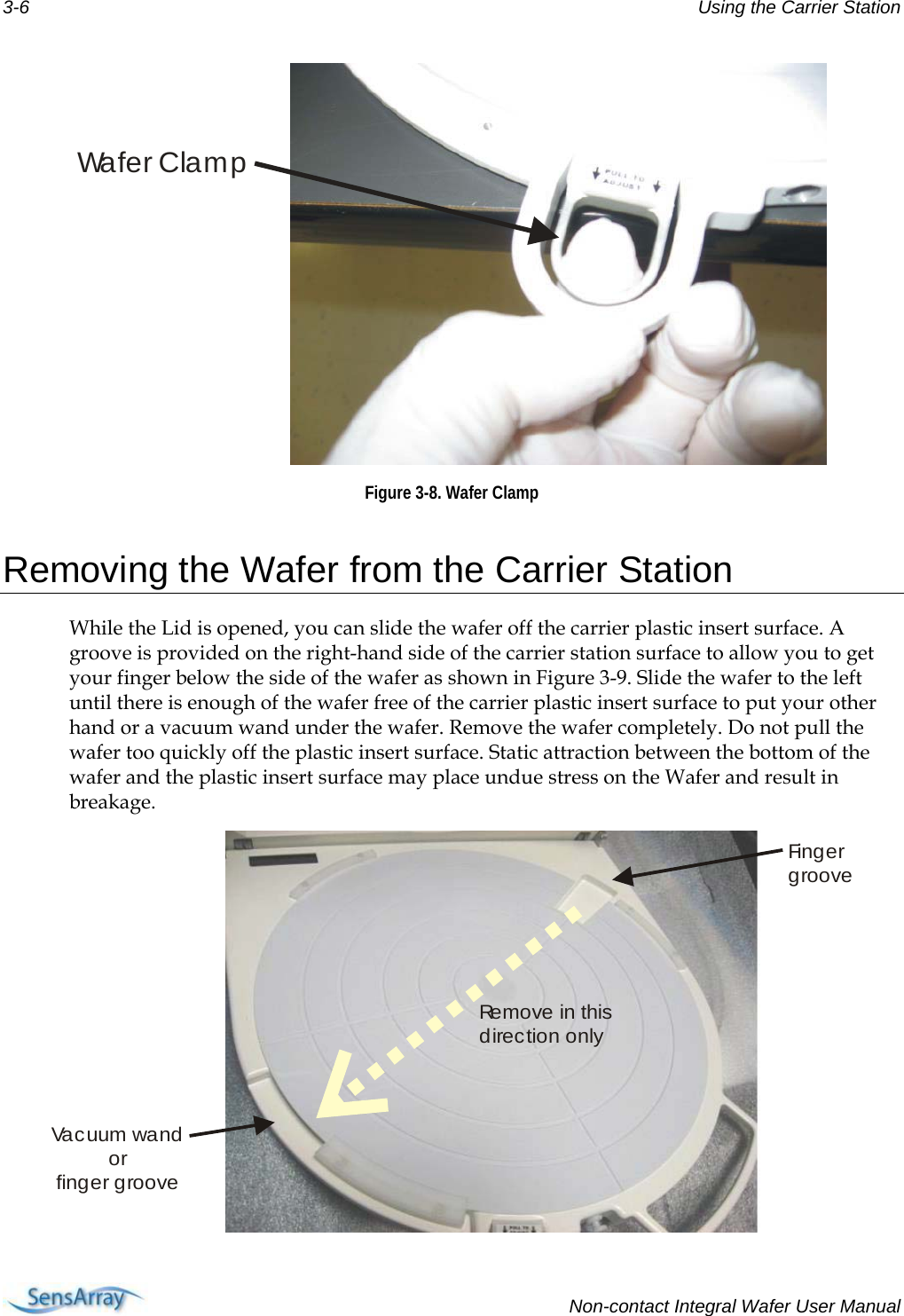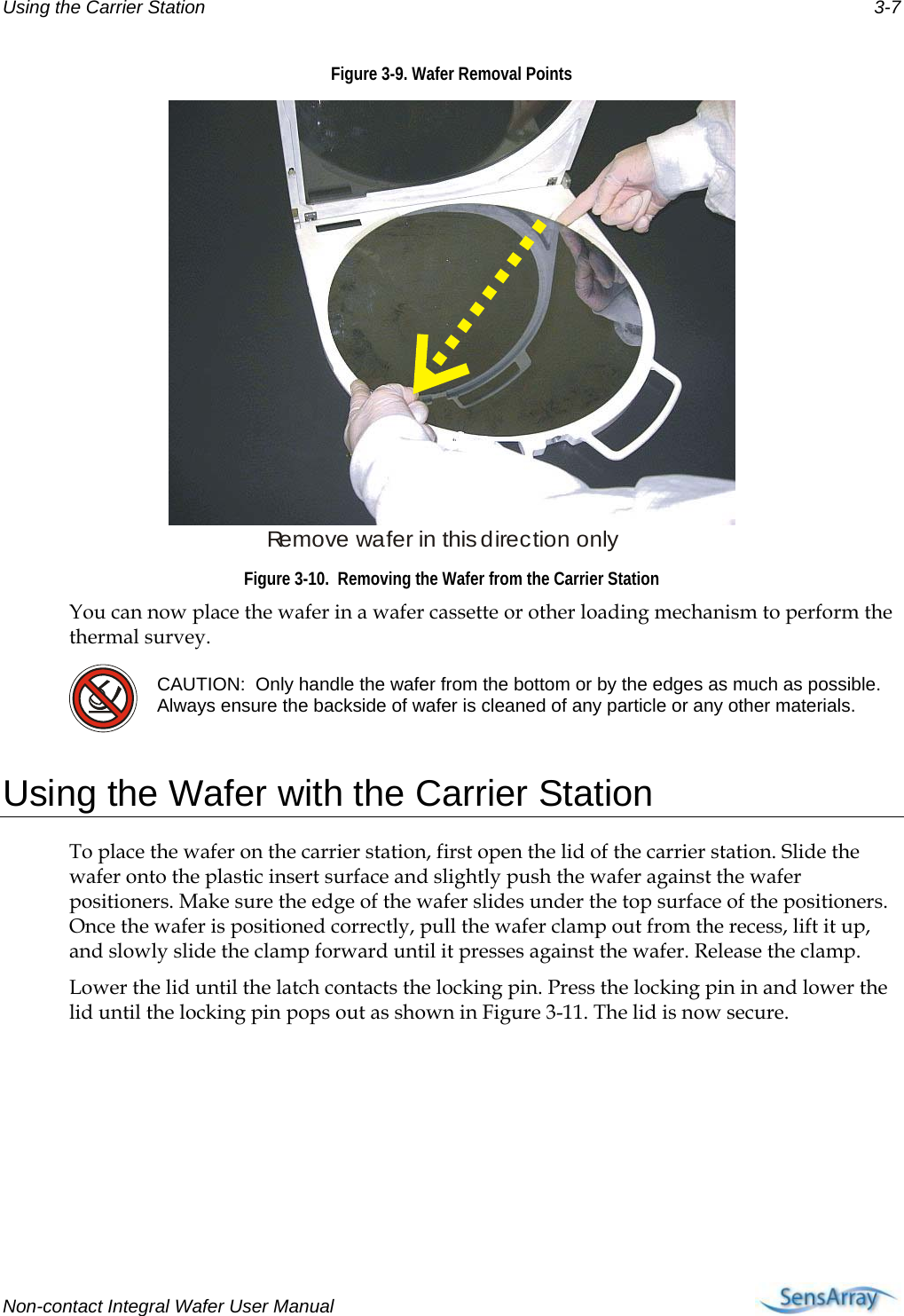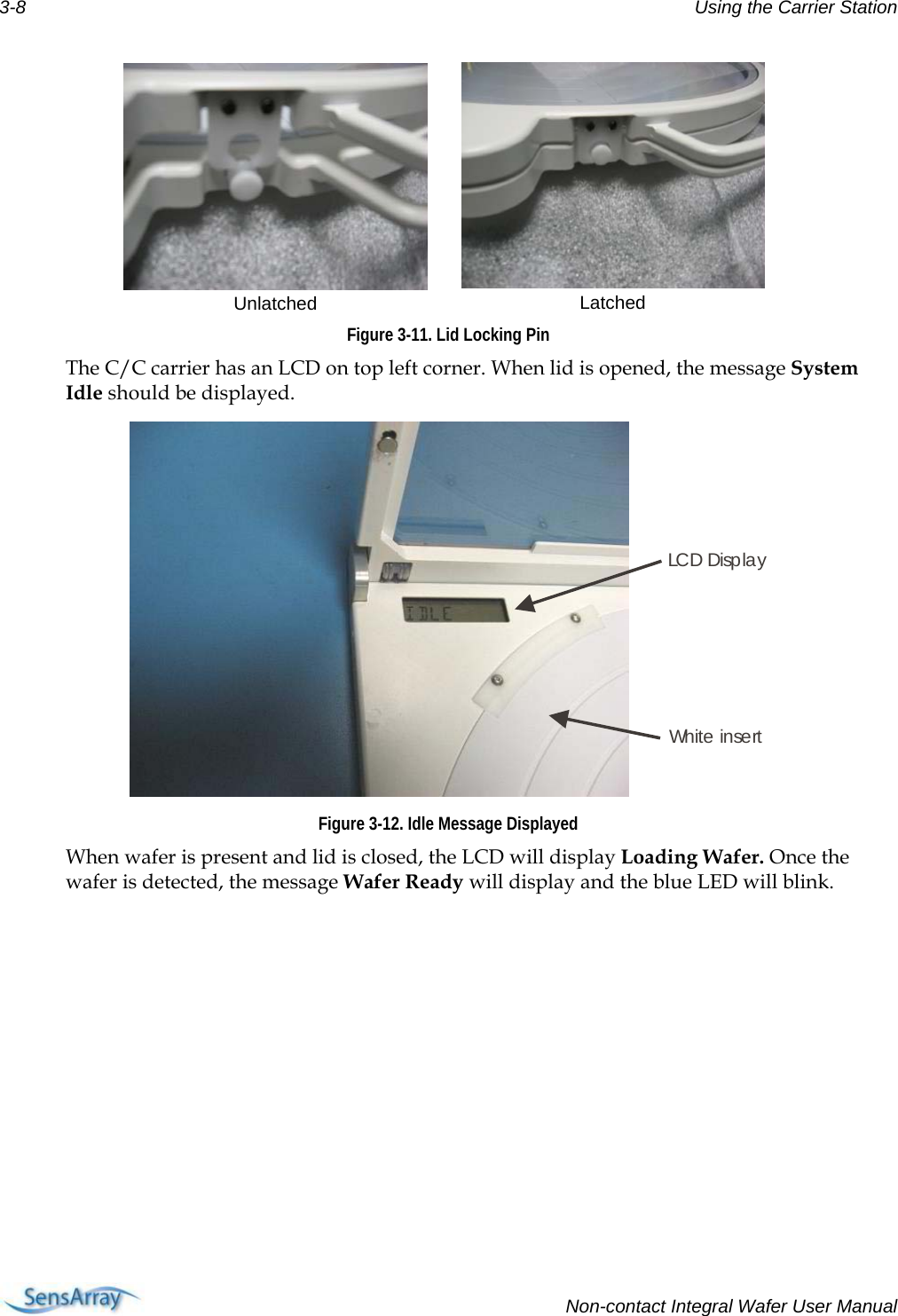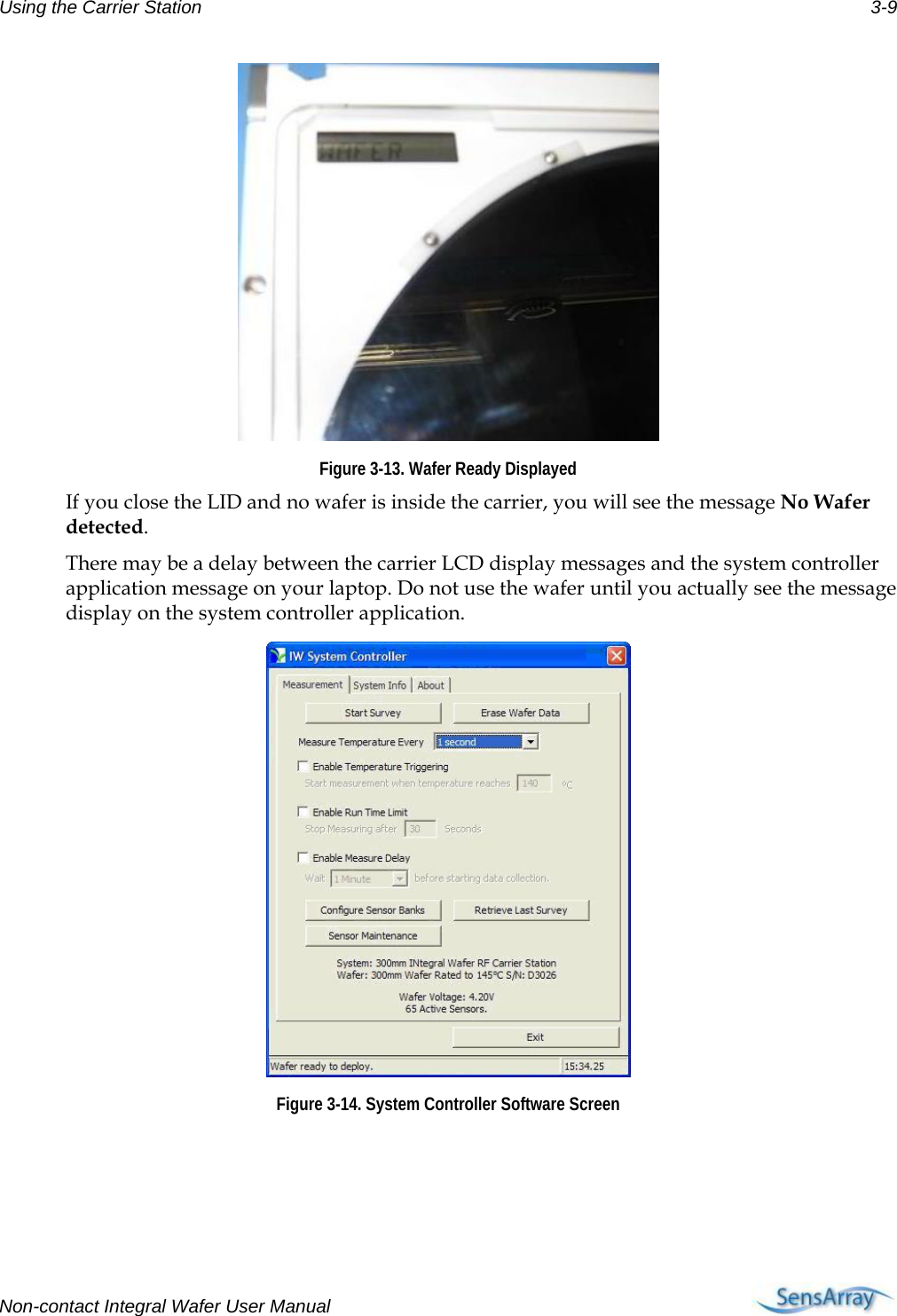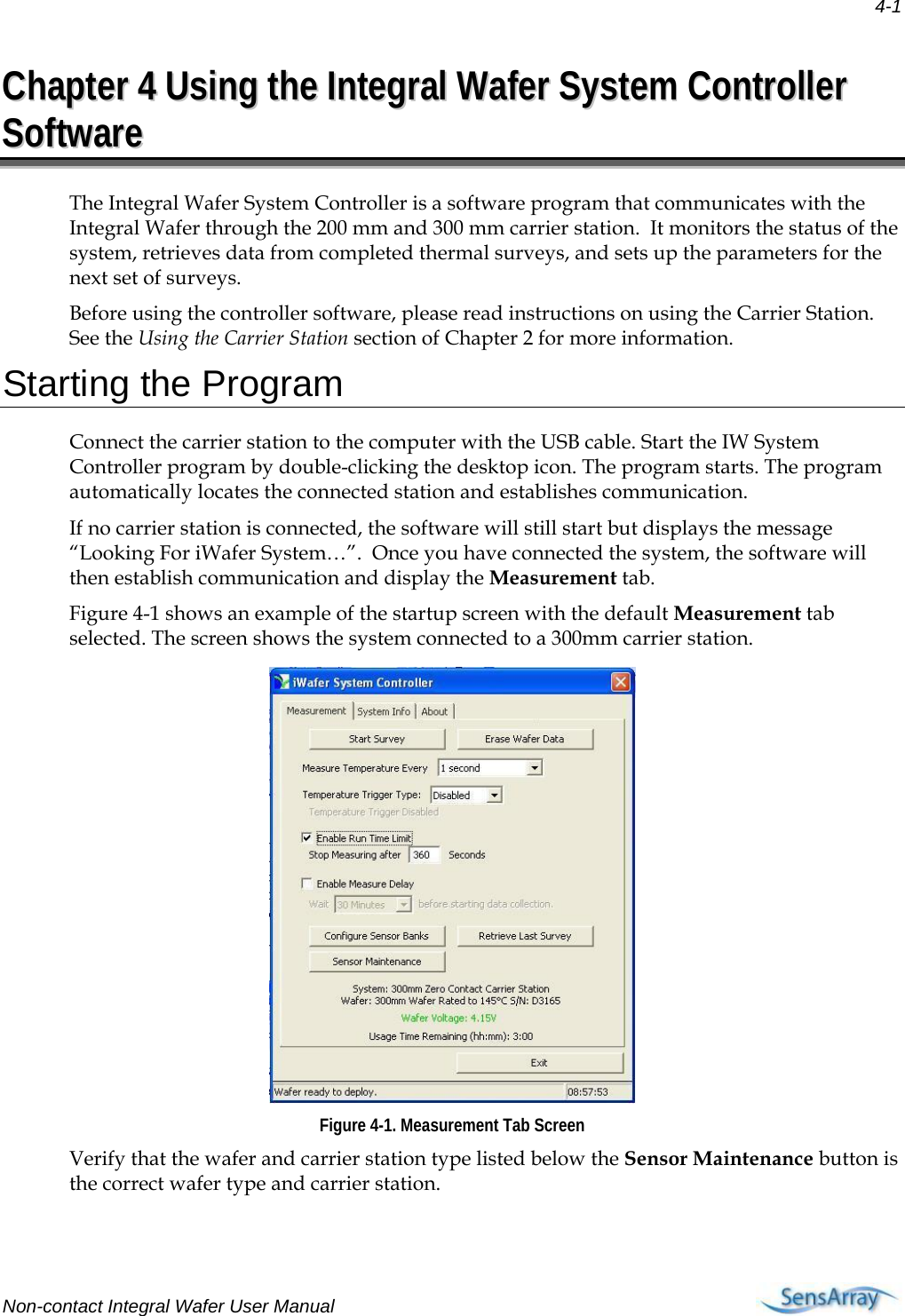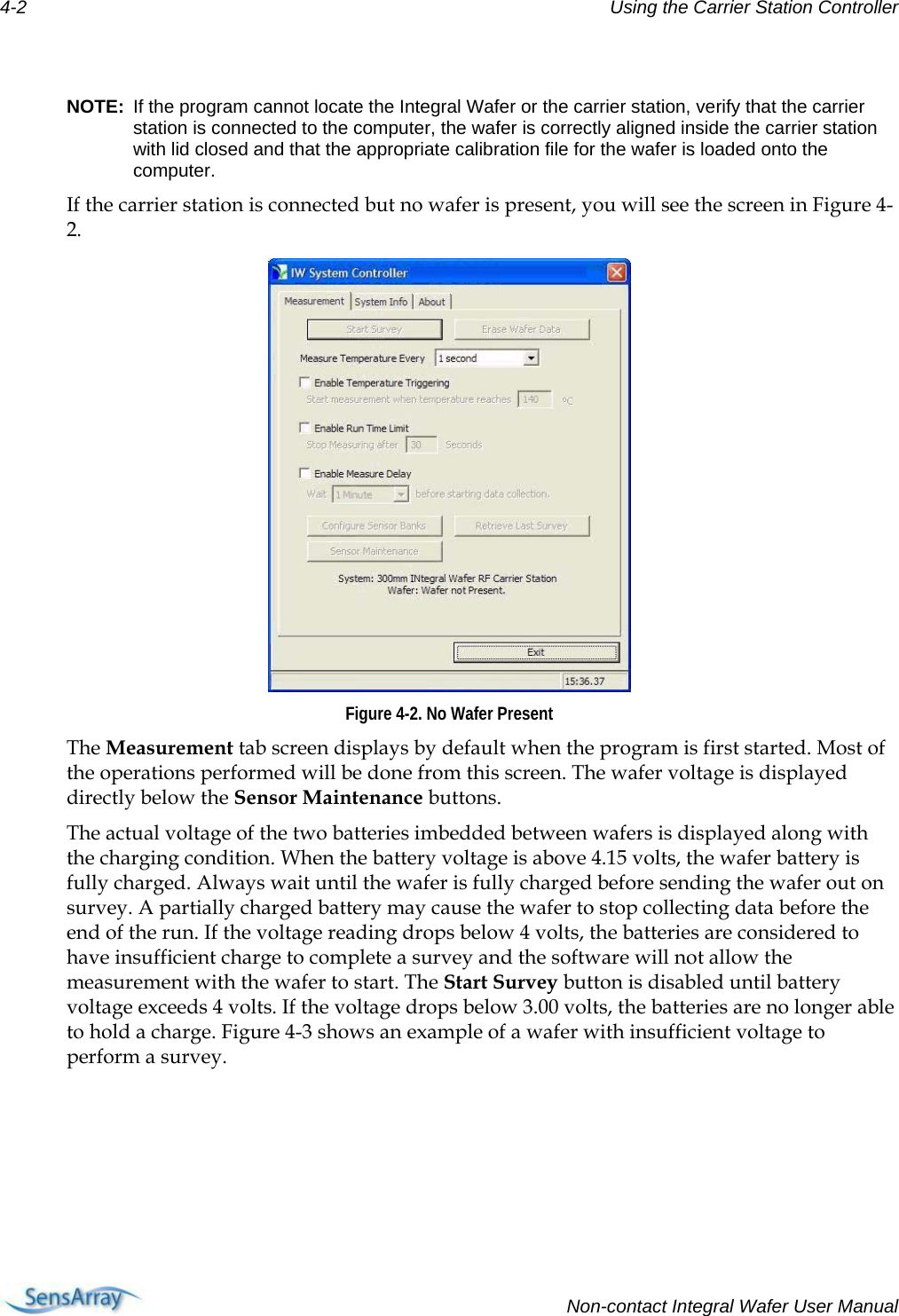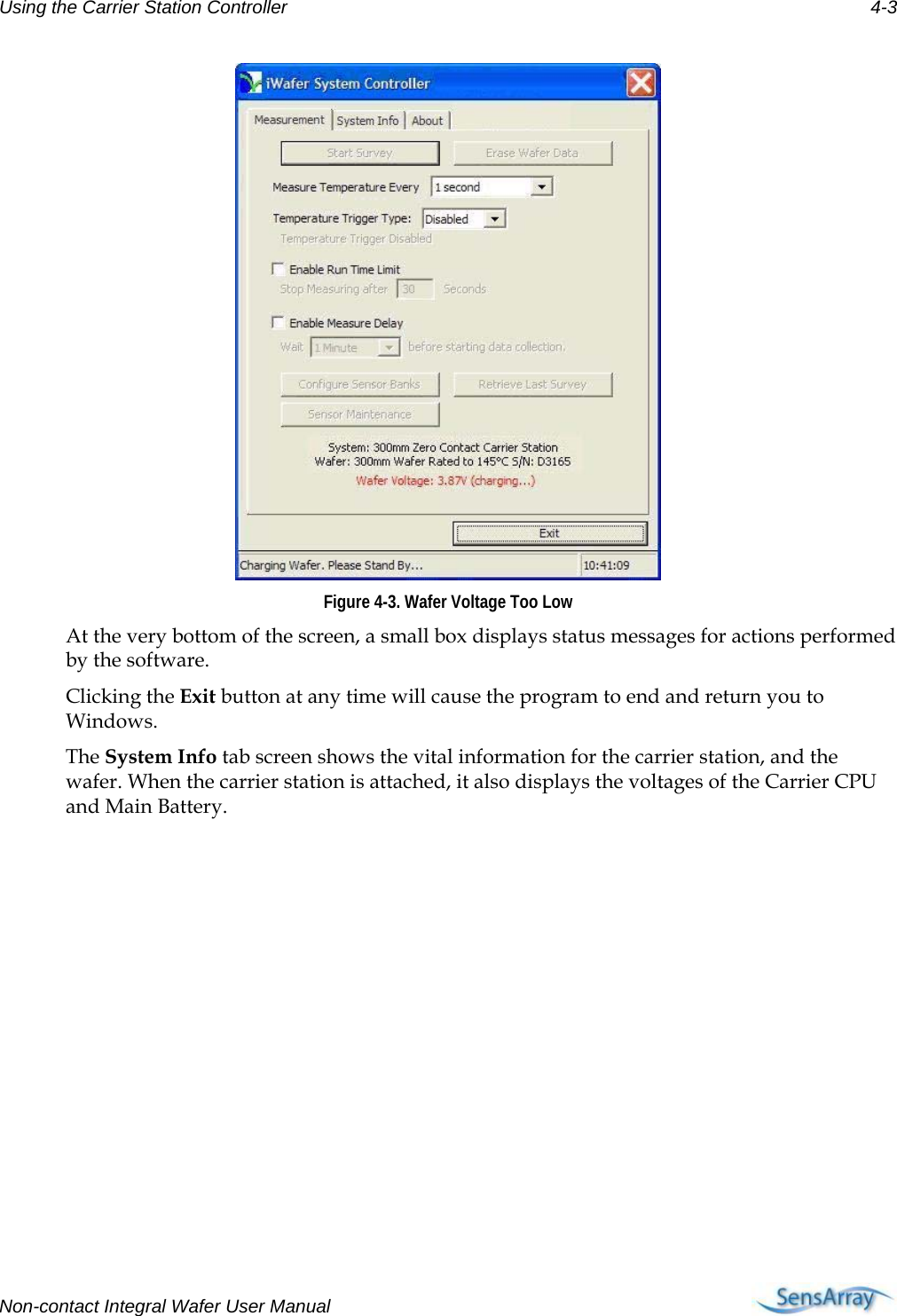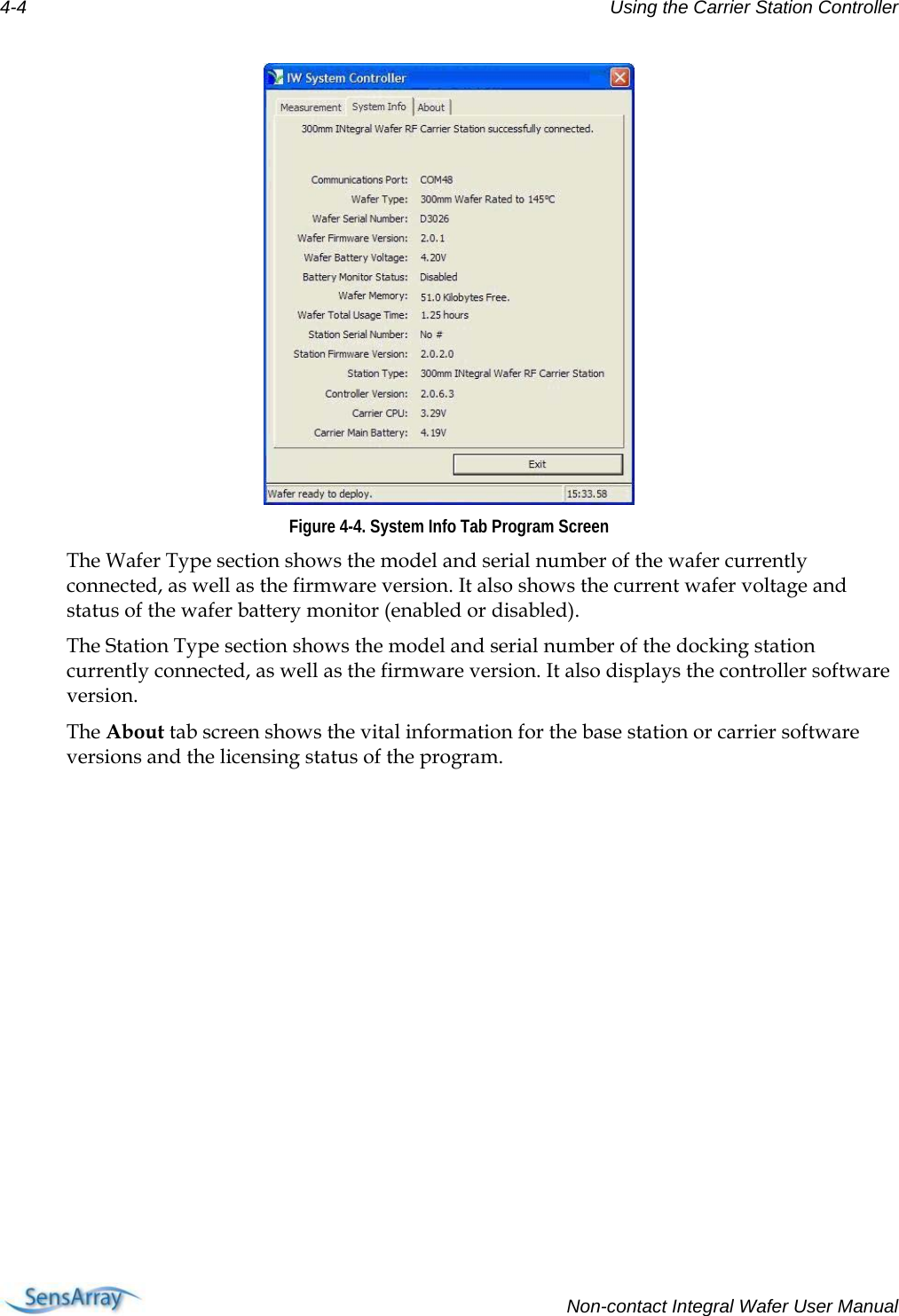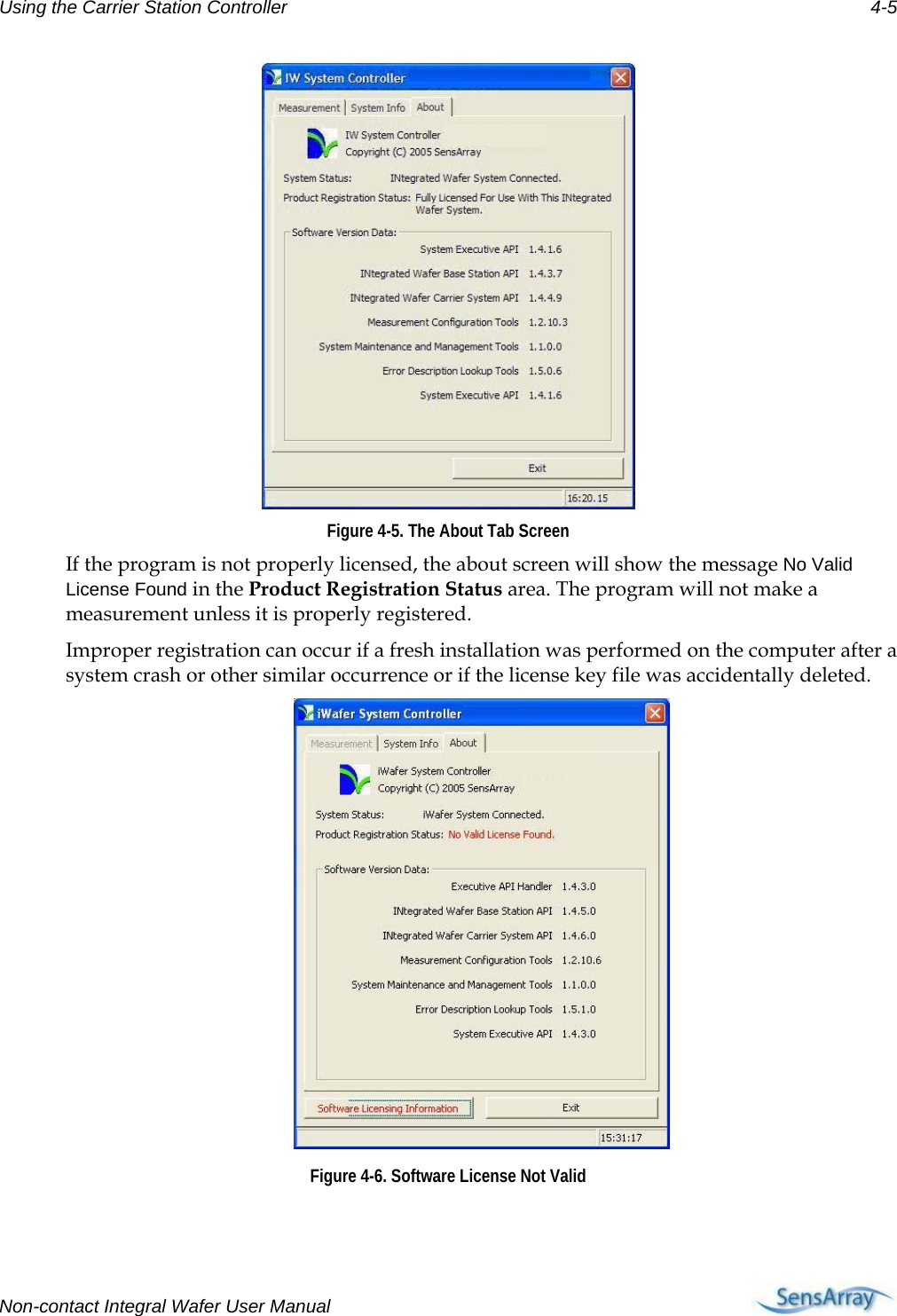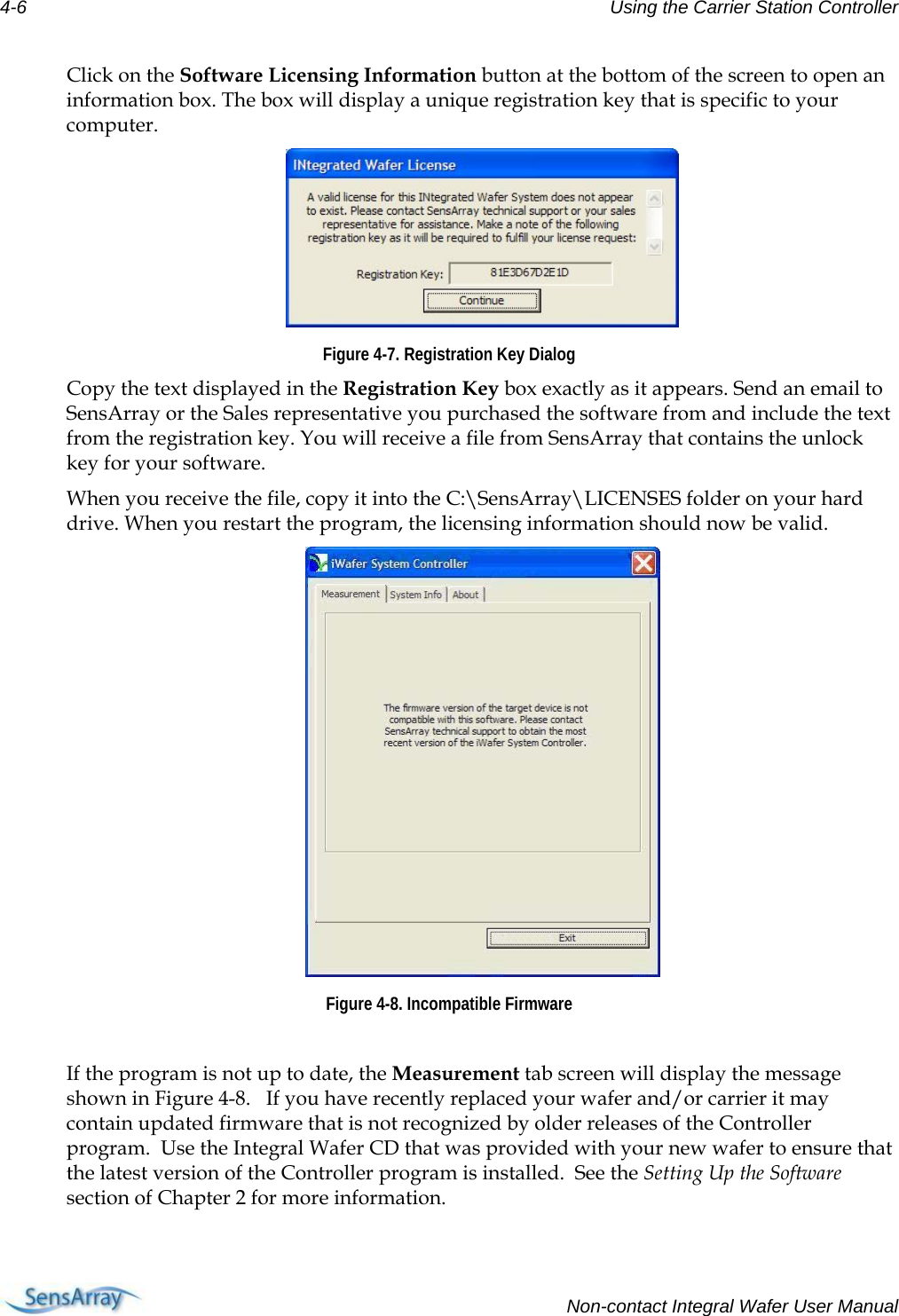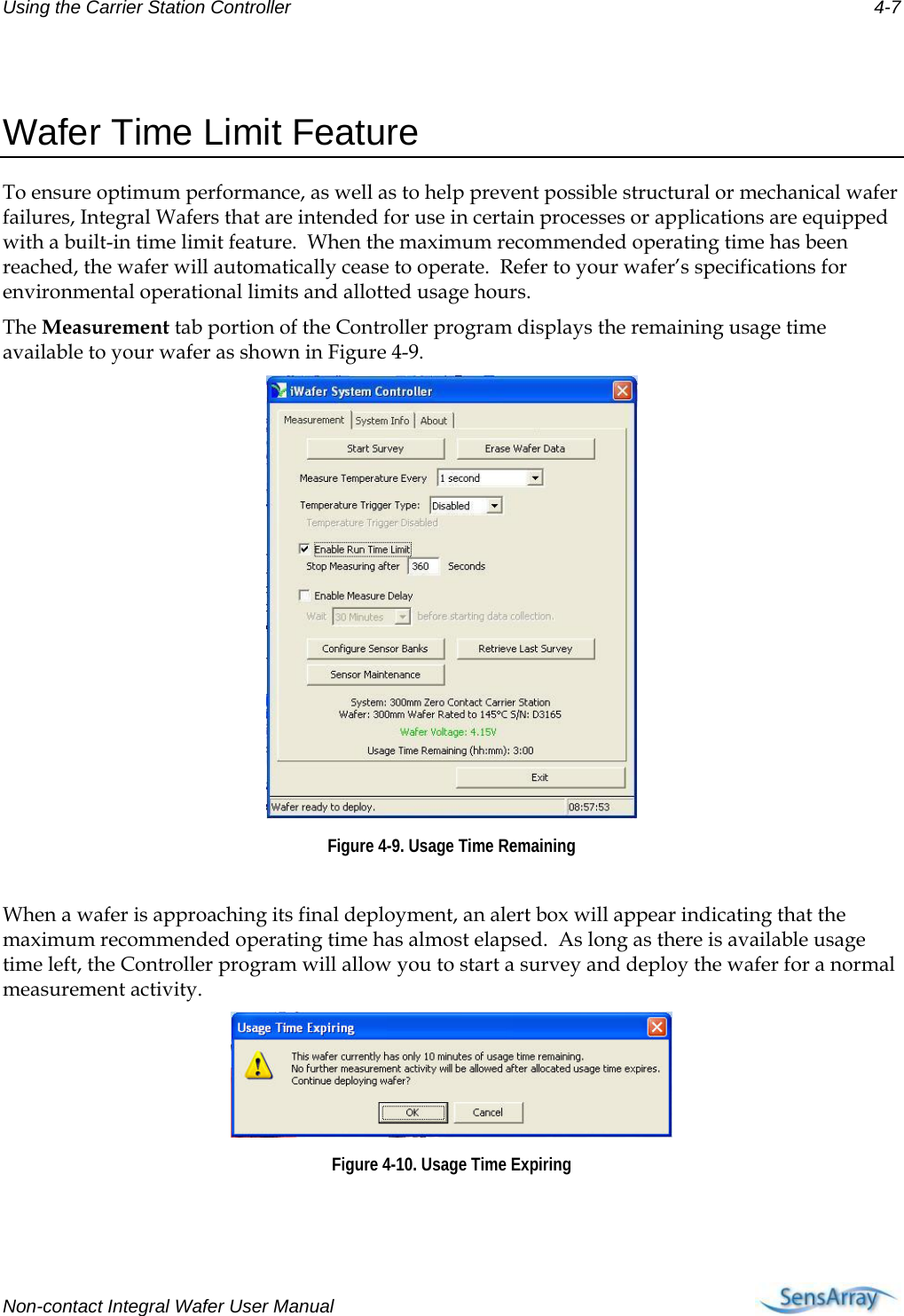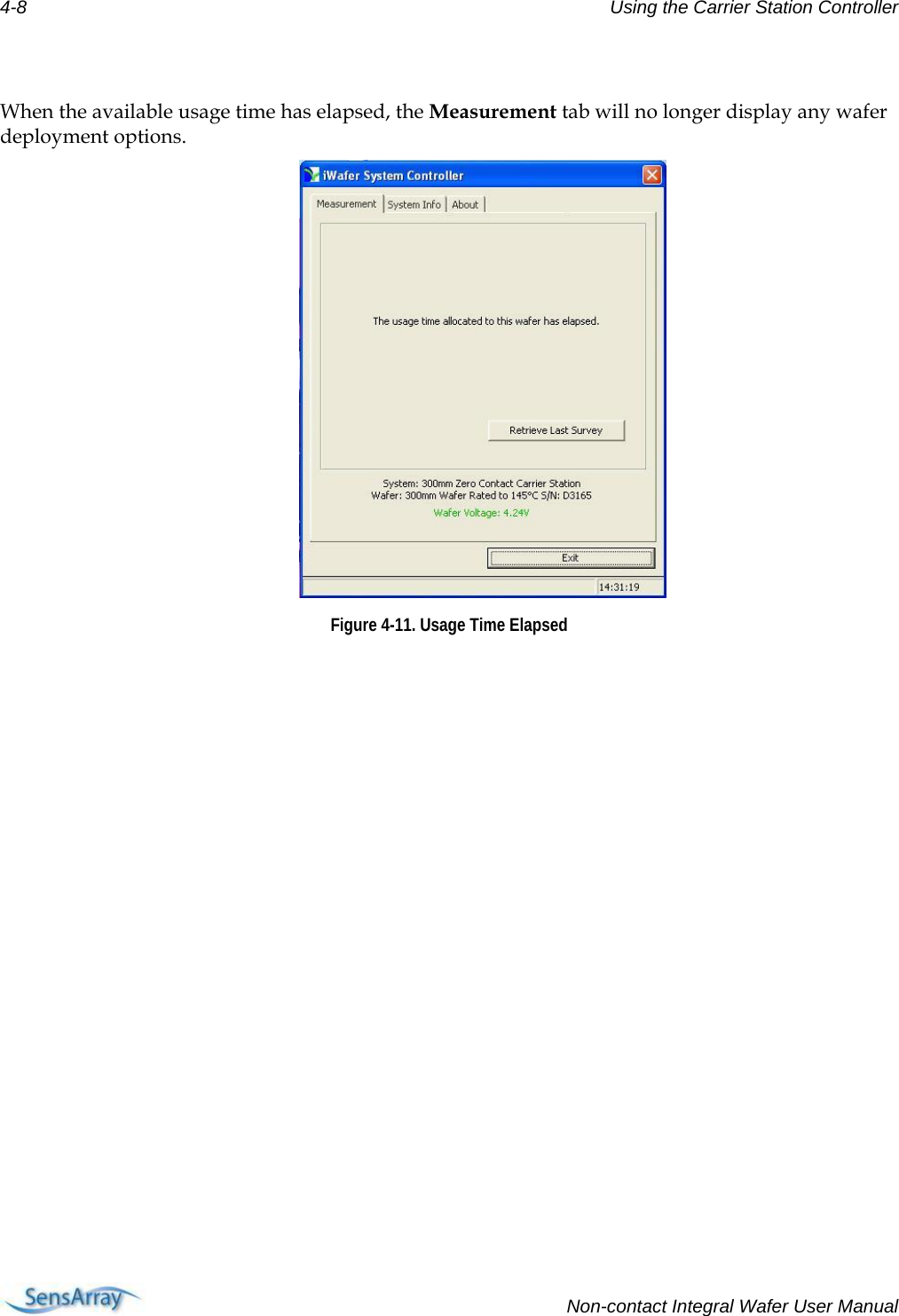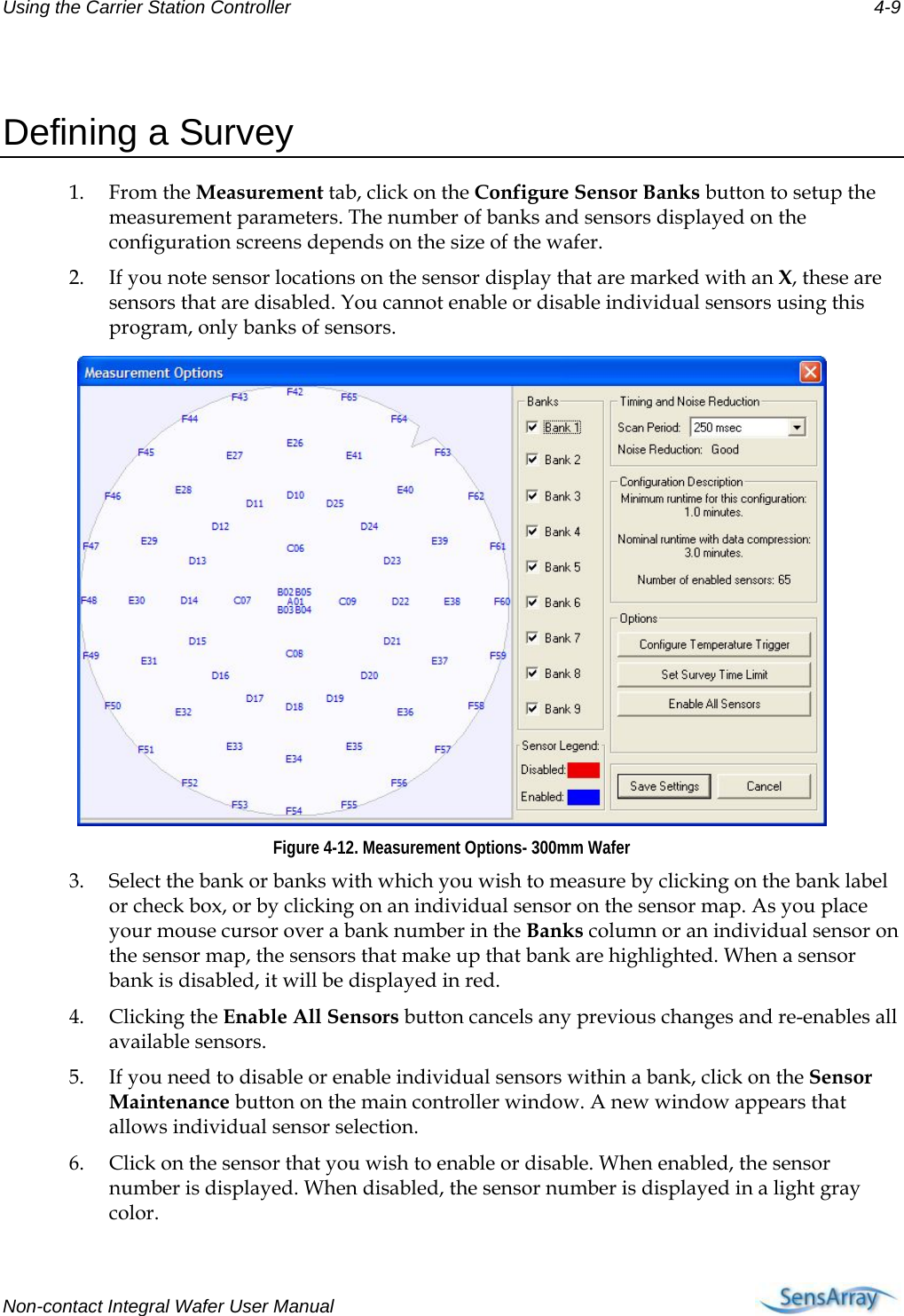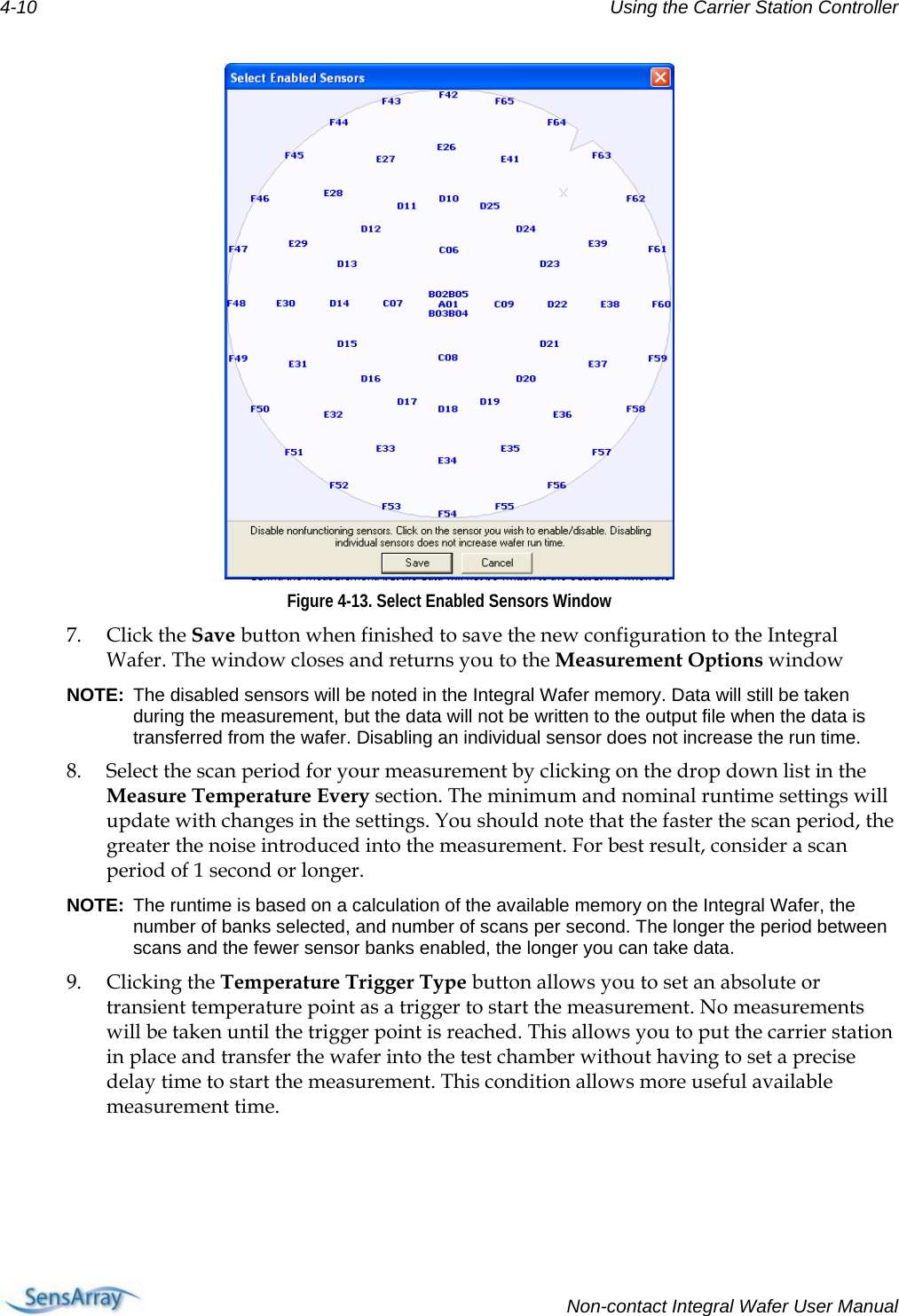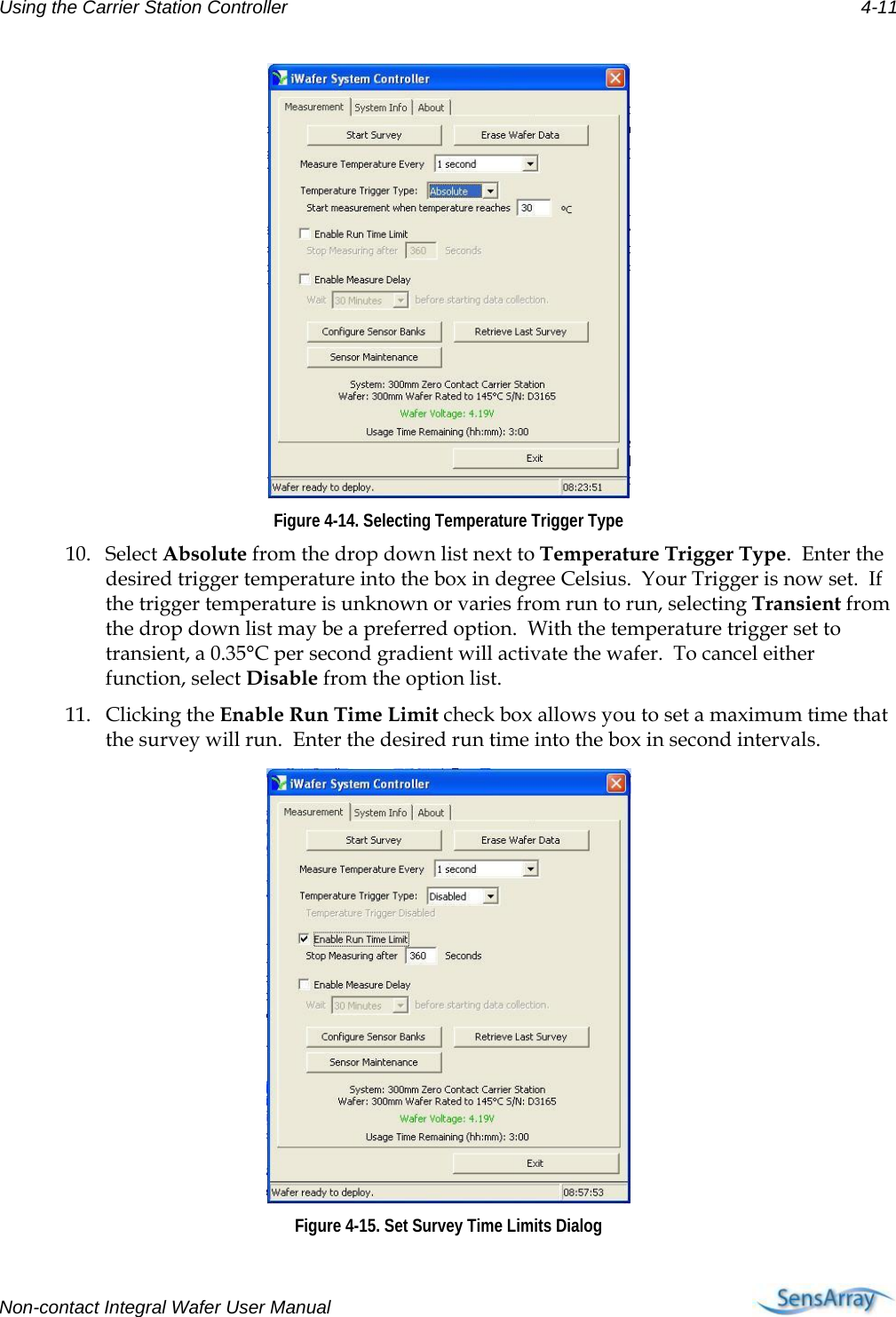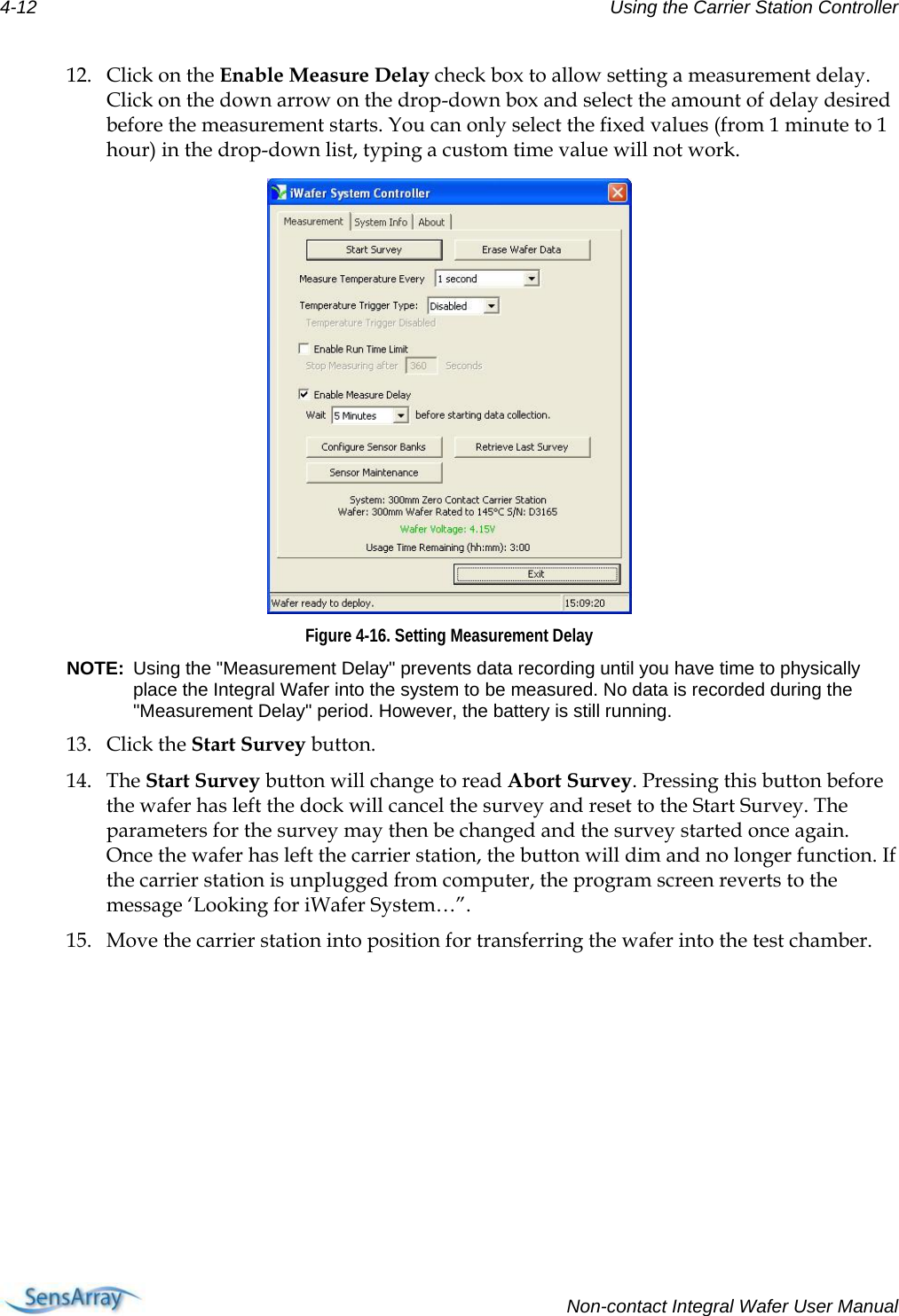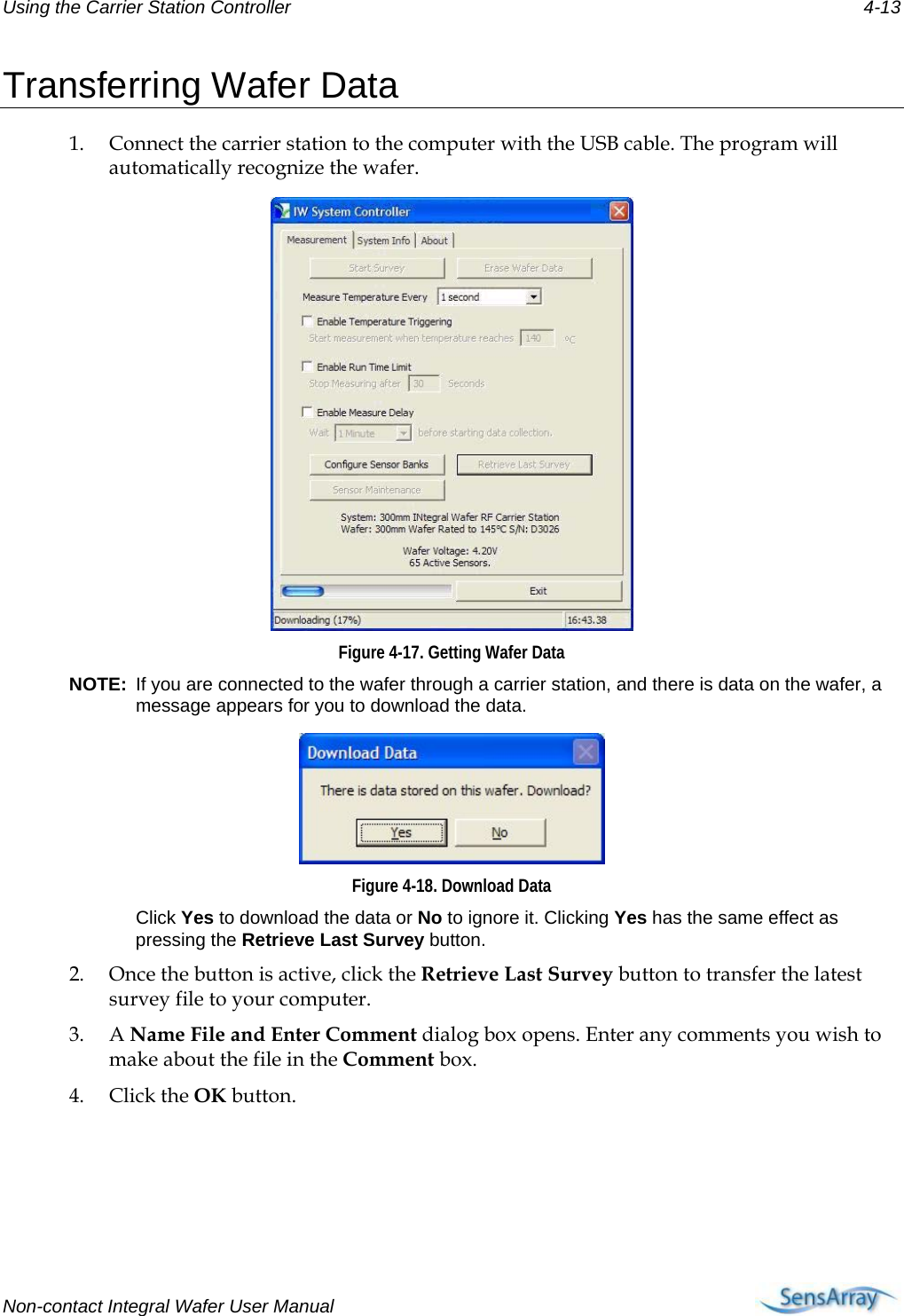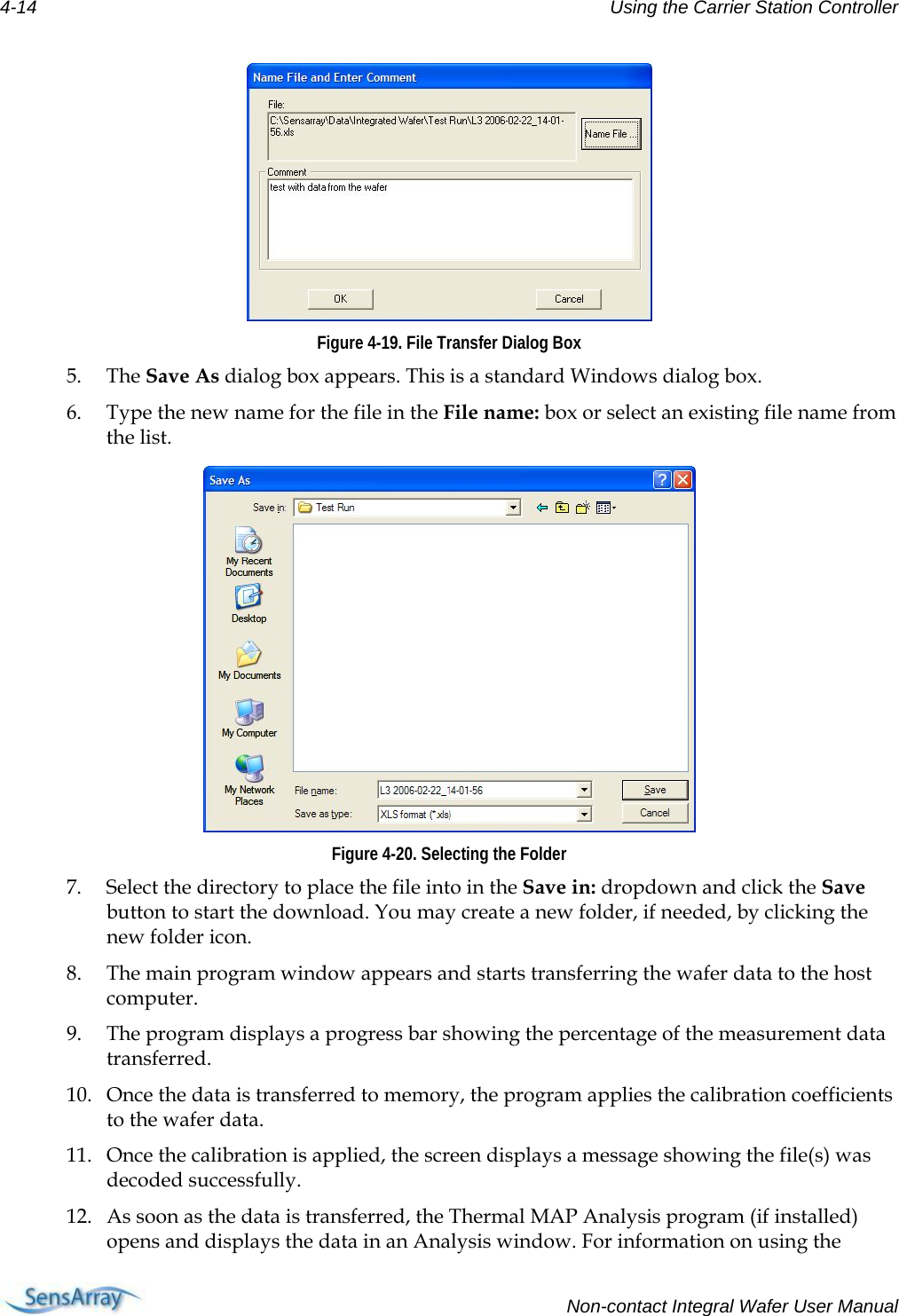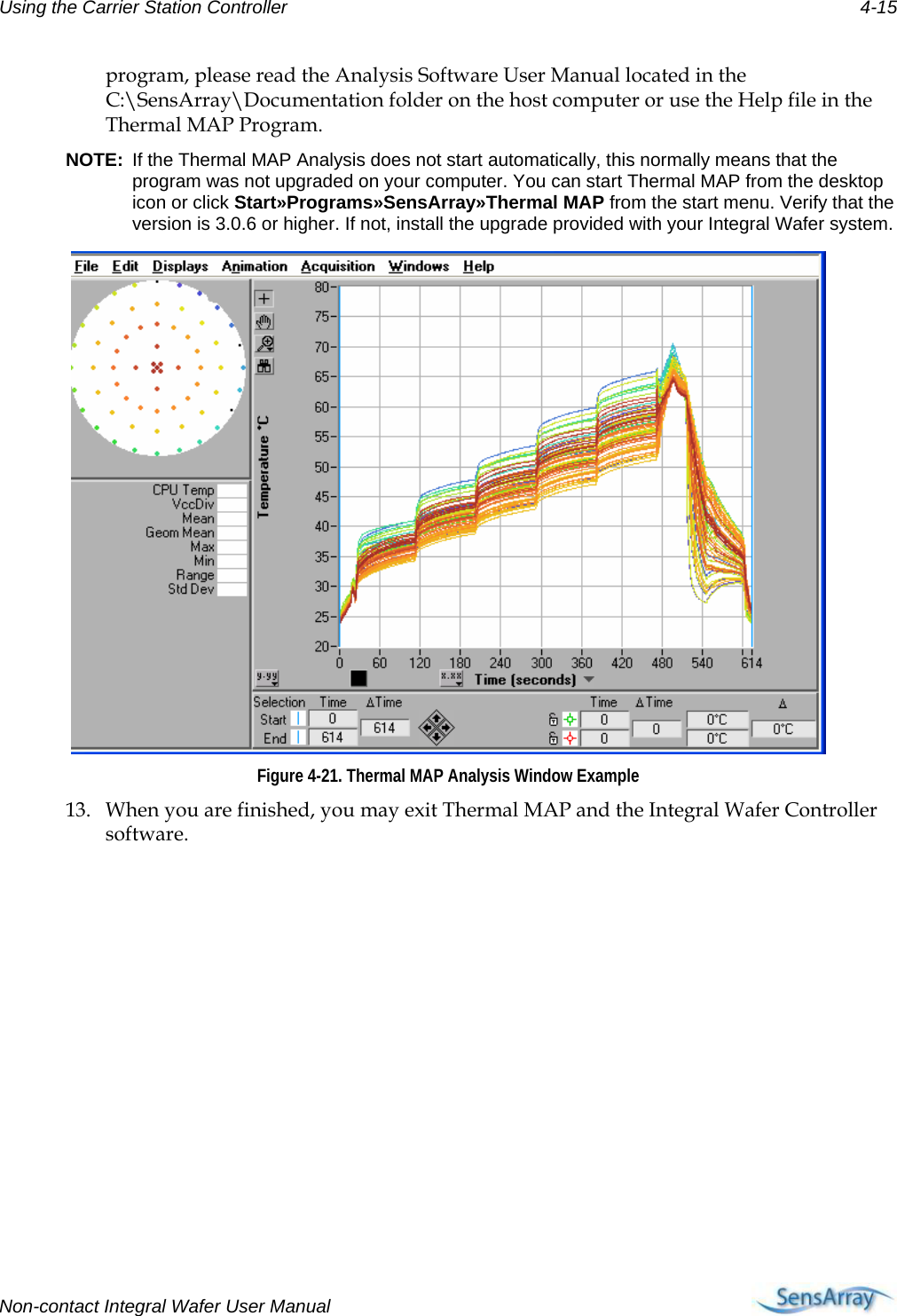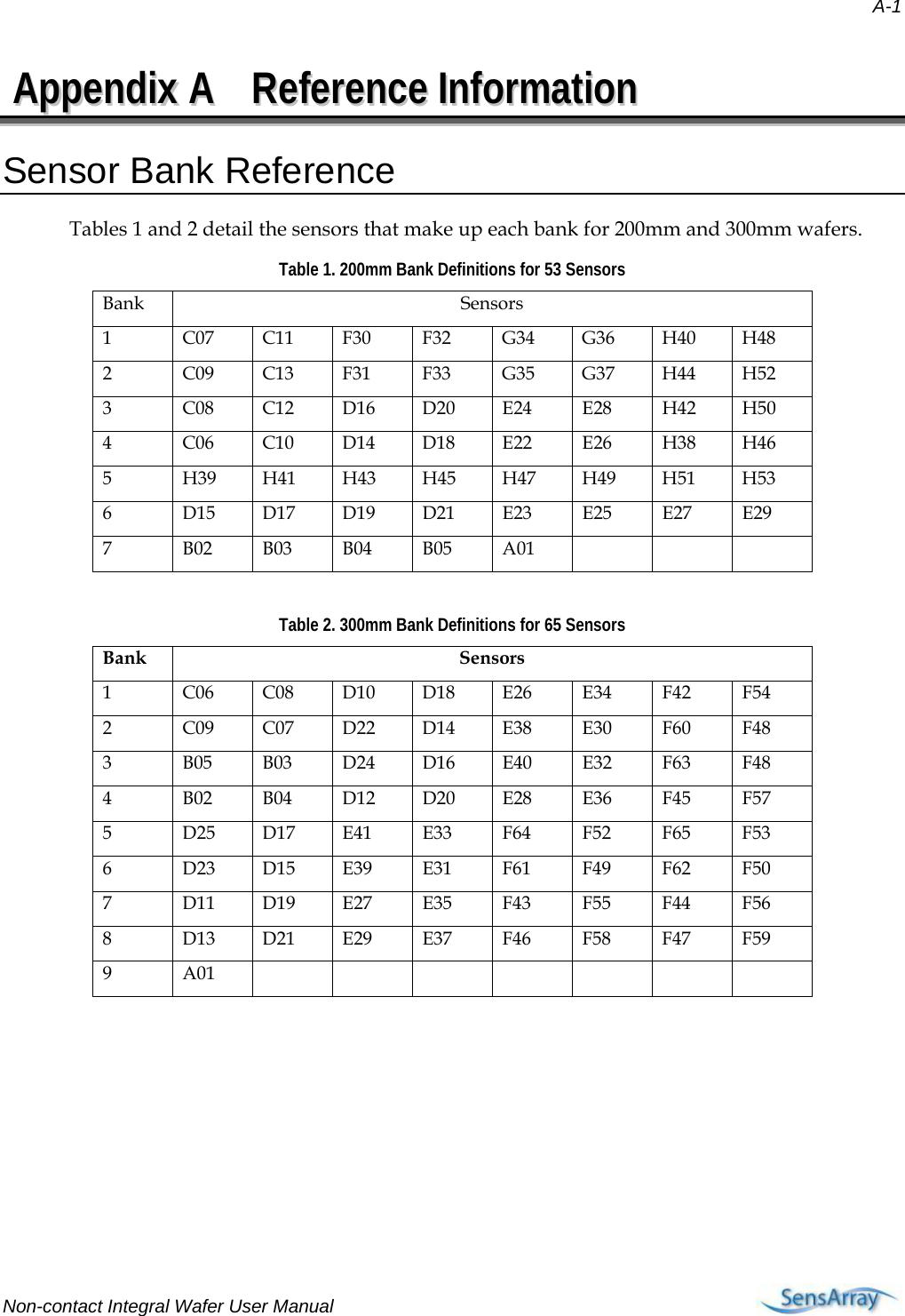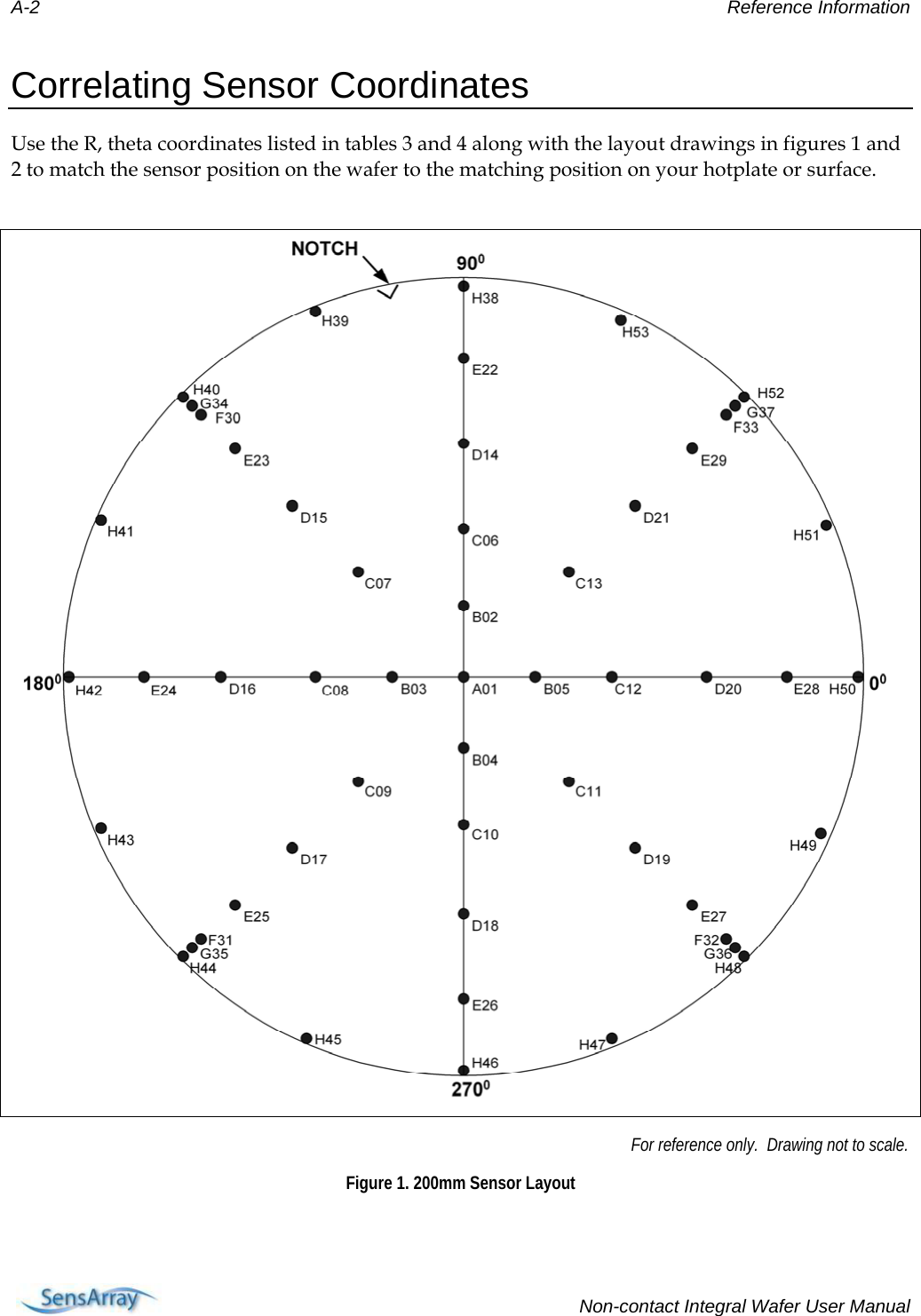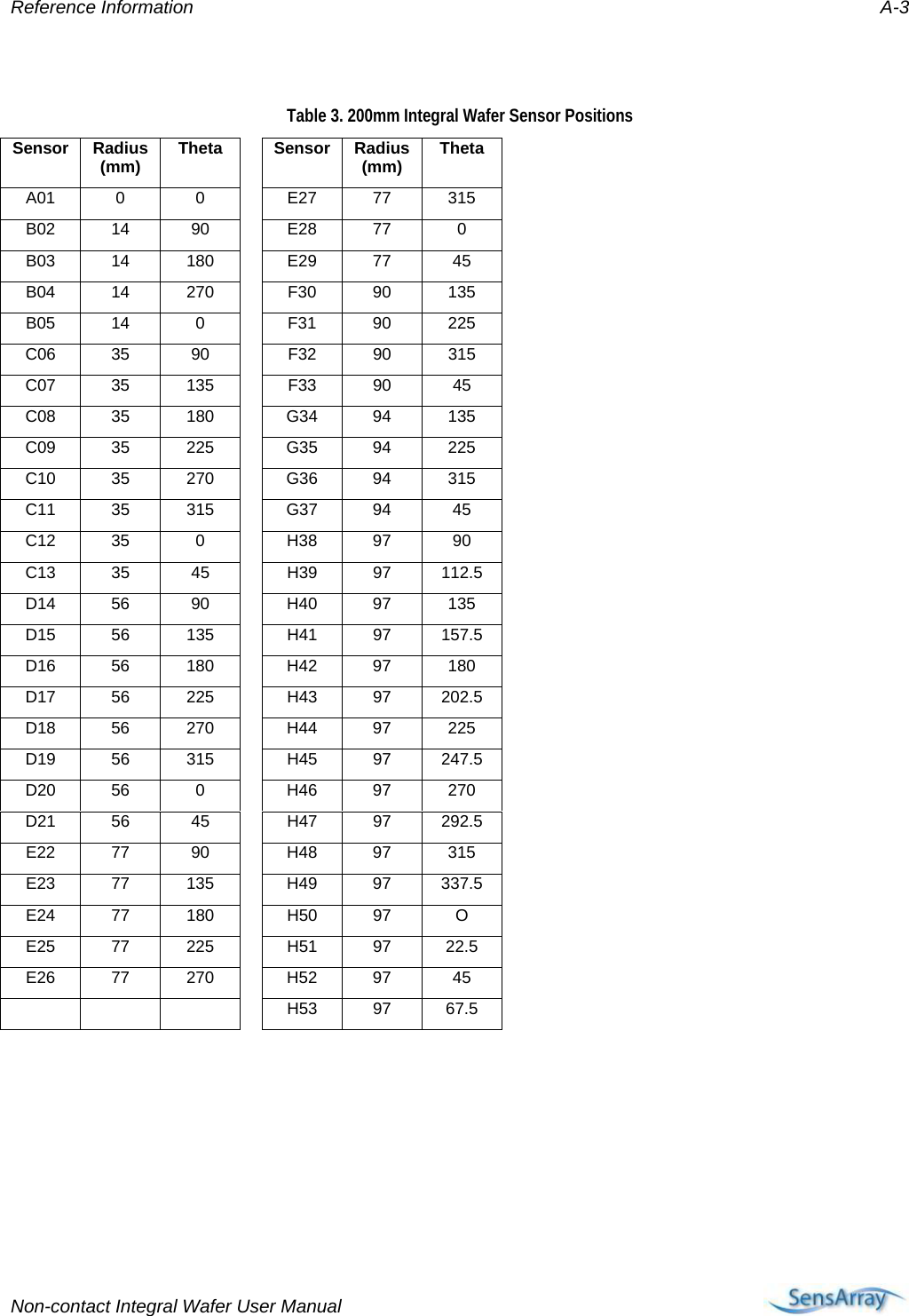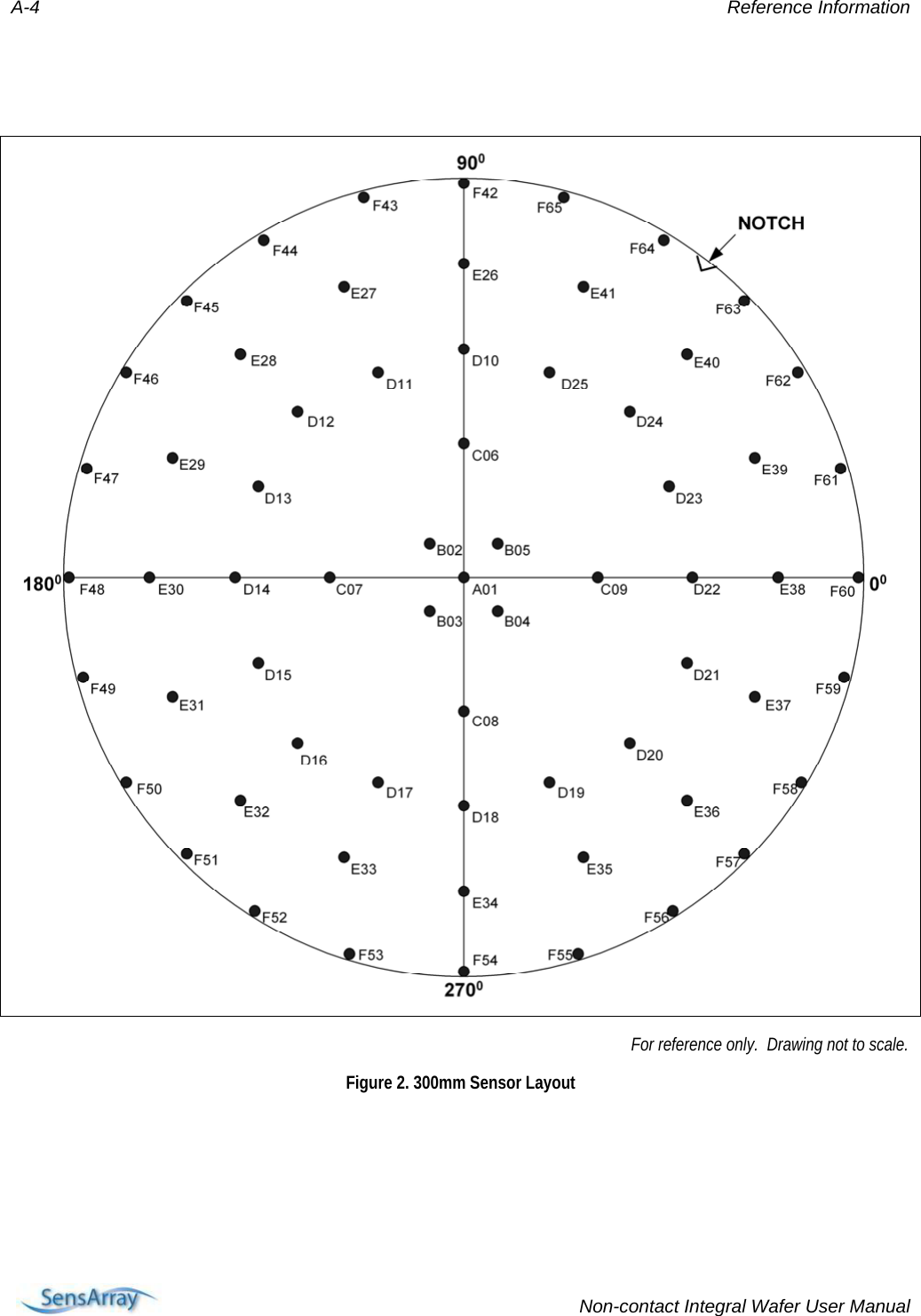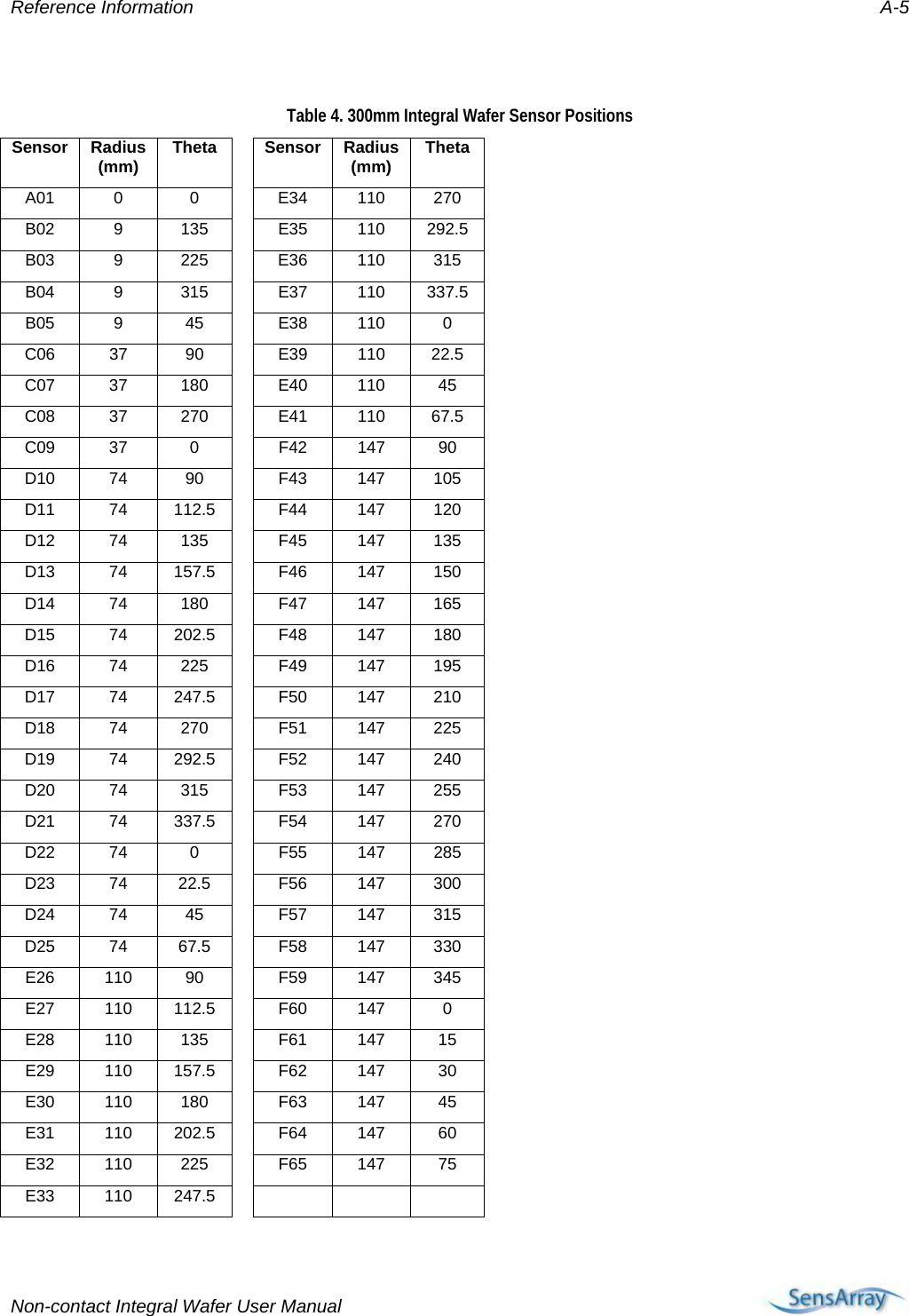KLA RFWC812A Integral Wafer RF Carrier System for 200 and 300mm Wafers User Manual Integral Wafer NC Title Page
KLA-Tencor Corporation Integral Wafer RF Carrier System for 200 and 300mm Wafers Integral Wafer NC Title Page
KLA >
Contents
- 1. Users Manual
- 2. Users Manual 2
Users Manual 2
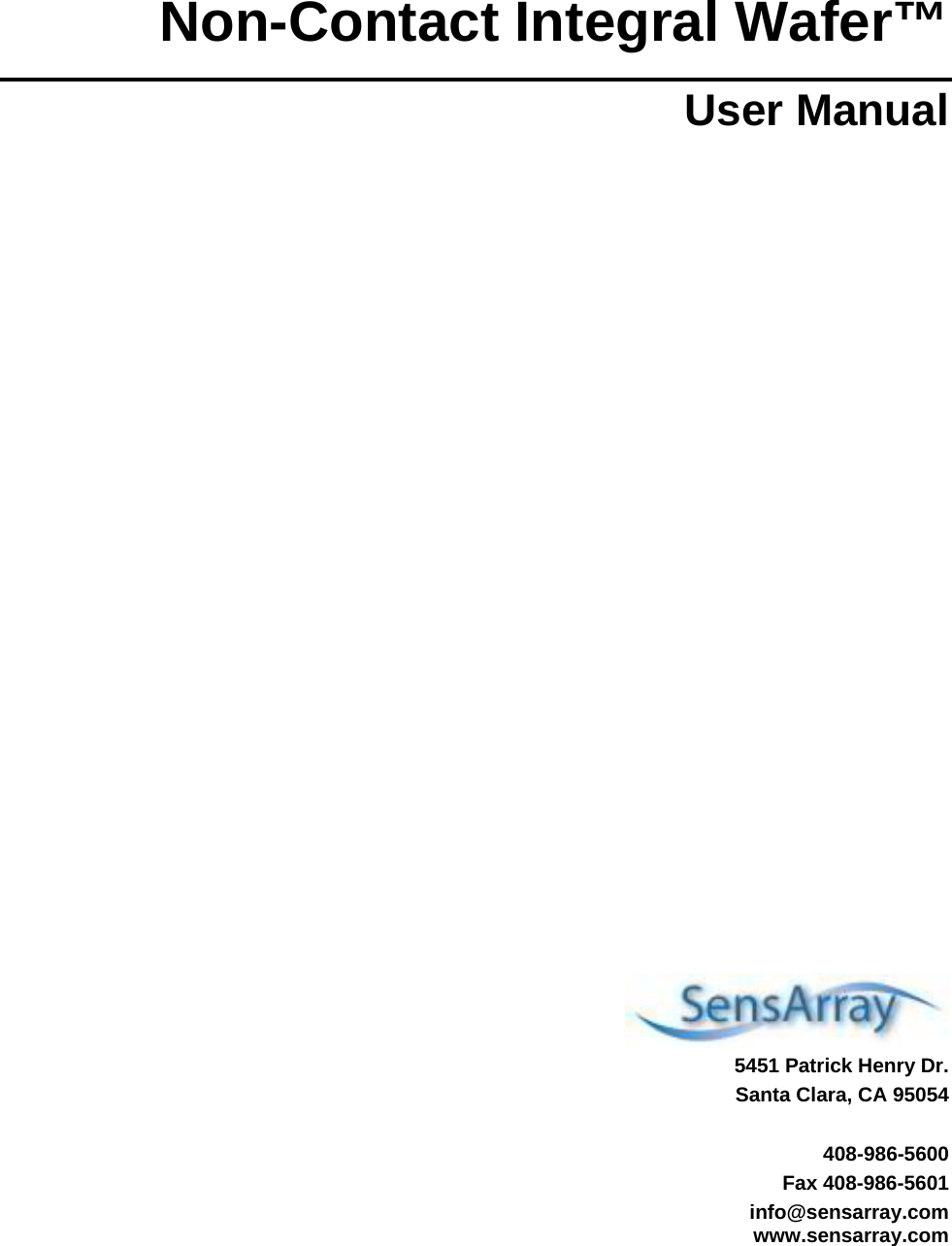
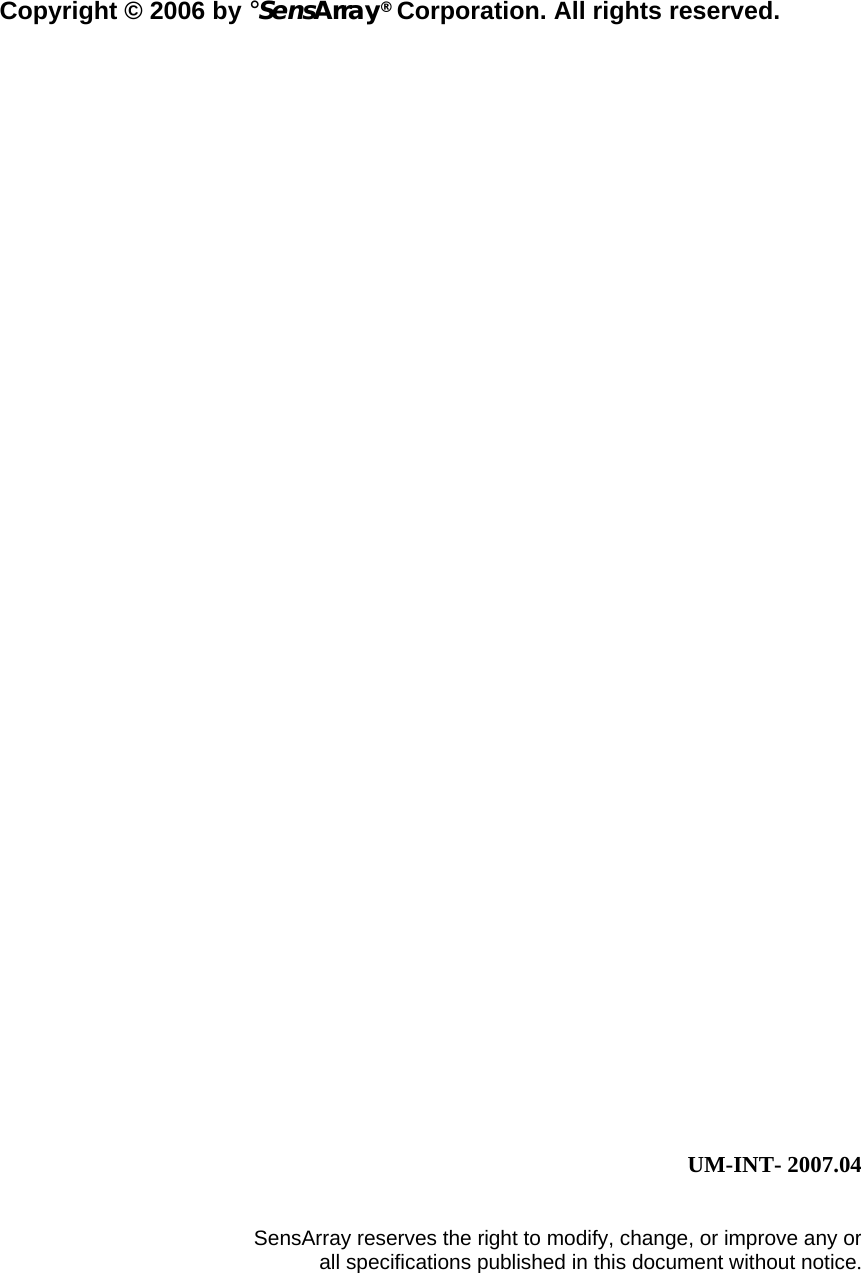
![Important Notices Warranty Integral Wafer System Hardware SensArray Corporation warrants that the contact style or non-contact style Integral Wafer Systems (“Products”) sold will be free from defects in material and workmanship, and perform to SensArray’s applicable published specifications for a period of 12 months after shipment for the Docking Station. The Integral Wafer is warranted for 6 months or a specified number of operating hours, whichever occurs first. Refer to the specification provided with your wafer for the exact warranty terms. The Products that comprise the System shall include the Docking Station. The liability of SensArray hereunder shall be limited to replacing or repairing, at its option, any defective Products that are returned F.O.B. to SensArray’s plant in Santa Clara, CA. In no case are Products to be returned without the purchaser first obtaining SensArray’s permission and Returned Materials Authorization [RMA] number. In no event shall SensArray be liable for any consequential or incidental damages. Products that have been subject to abuse, misuse, accident, alteration, neglect, or unauthorized repair or installation are not covered by this warranty. SensArray will make the final determination as to the existence and cause of any alleged defect. SensArray is not responsible for maintaining or supplying any consumable materials used in conjunction with this hardware. No warranty is made with respect to any customized equipment or Products supplied with Integral Wafer systems where produced to Purchaser’s specifications except as specifically stated in writing by SensArray in the contract for such Products. The purchaser will pay the shipping costs of returned materials to SensArray; SensArray will pay the cost of shipping repaired/replaced material to Purchaser. This Warranty is the only warranty made by SensArray with respect to the Product delivered hereunder and may be modified only by a written instrument that is signed by a duly authorized officer of SensArray and accepted by Purchaser. Except as provided above, SensArray makes no warrantees, expressed or implied, including any warranty of merchantability for a particular purpose. Integral Wafer Software SensArray Corporation warrants that (a) Integral Wafer software (Software) will perform substantially in accordance with the accompanying written materials for a period of 12 months after shipment, and (b) the medium on which the Software is recorded will be free from defects in materials and workmanship under normal use and service for a period of 12 months after shipment. Faults caused by unauthorized modification, misuse or abuse of products, or problems due to software not supplied by SensArray, are not covered by this Warranty. During the Warranty Period, the purchaser may return failed Software to SensArray for repair or replacement, at SensArray’s option. SensArray does not warrant that the operation of the Software shall be uninterrupted or error free. The purchaser will first notify SensArray of the nature of the problem and obtain a Returned Materials Authorization [RMA] number. The purchaser will pay the costs of shipping returned Software to SensArray; SensArray will pay the cost of shipping repaired/replaced Software to the purchaser. No other warranty is expressed or implied. SensArray specifically disclaims the implied warranty of merchantability and fitness for a specific application. The Integral Wafer Software Documentation Materials (“Documentation”) are subject to revision and change without notice. SensArray agrees to make a best effort attempt to keep the purchaser advised of changes to the Documentation.](https://usermanual.wiki/KLA/RFWC812A.Users-Manual-2/User-Guide-2420611-Page-3.png)
